John 5’s Cathartic Instrumentalism 5:30 AM (17 minutes ago)
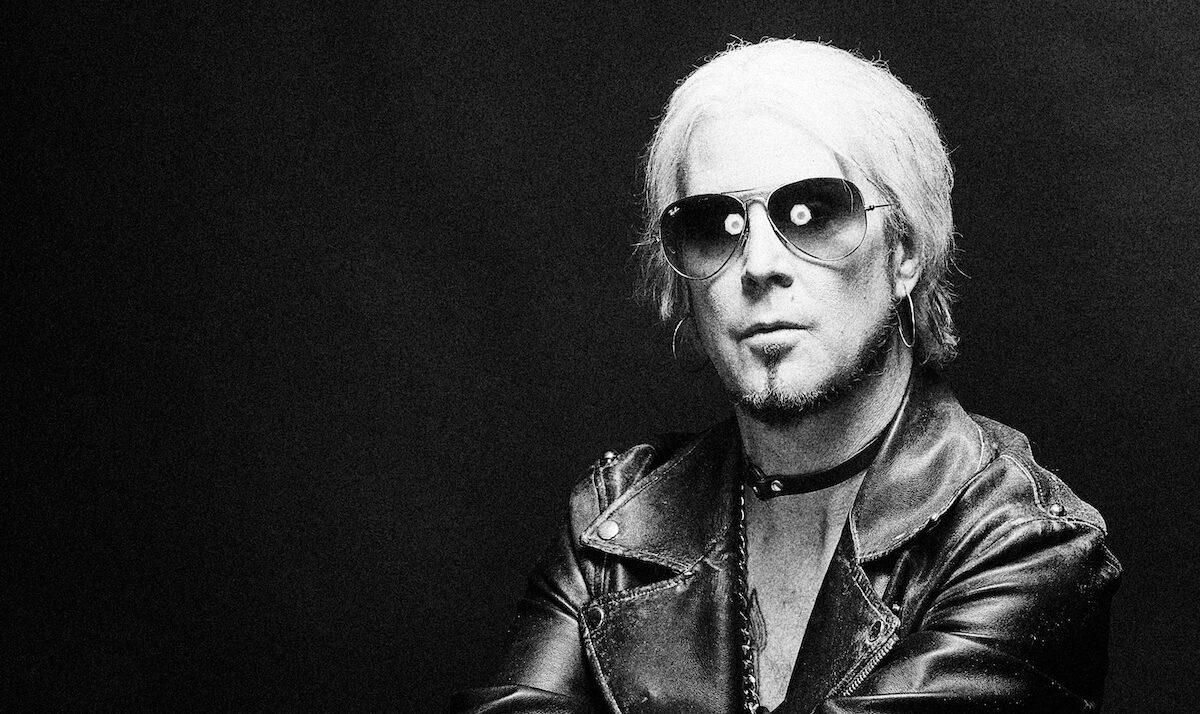
Instrumental music is not for everyone. Still, lots of creative people enjoy it when they seek a vibe but not a vocal that might distract from thought or focused actions–like writing music reviews. I’m writing this one while listening to guitar virtuoso John 5’s latest, Ghost, and while it’s not exactly haunting, it is a harmonious aural experience which shows off fantastical fret and finger skills, as well as a fiercely focused heart.
I suggest watching 5’s brand new interview on Billy Corgan’s podcast, “The Magnificent Others,” to fully understand what I mean. On the show, the guitarist shares the shocking series of traumas that led him to delve deeper into the technical nuances of progressive shred-style guitar playing.
More from Spin:
- Bono, The Edge Revisit U2 Classics At Guthrie Prize Ceremony
- ‘Dream’ On: Miley Records New Song For Third ‘Avatar’ Film
- For Rob Thomas, Music Has Always Led the Way
The deaths of 5’s sister, father, mother, and best friend occurred within a short time frame, which led to multiple mental and physical ailments. He found that experimenting with and putting his mind and body intently into something he loved—his instrument—made things better. Listening to his latest material, you can almost feel the emotions as he works through them via every menacing riff and rhythmic repetition.
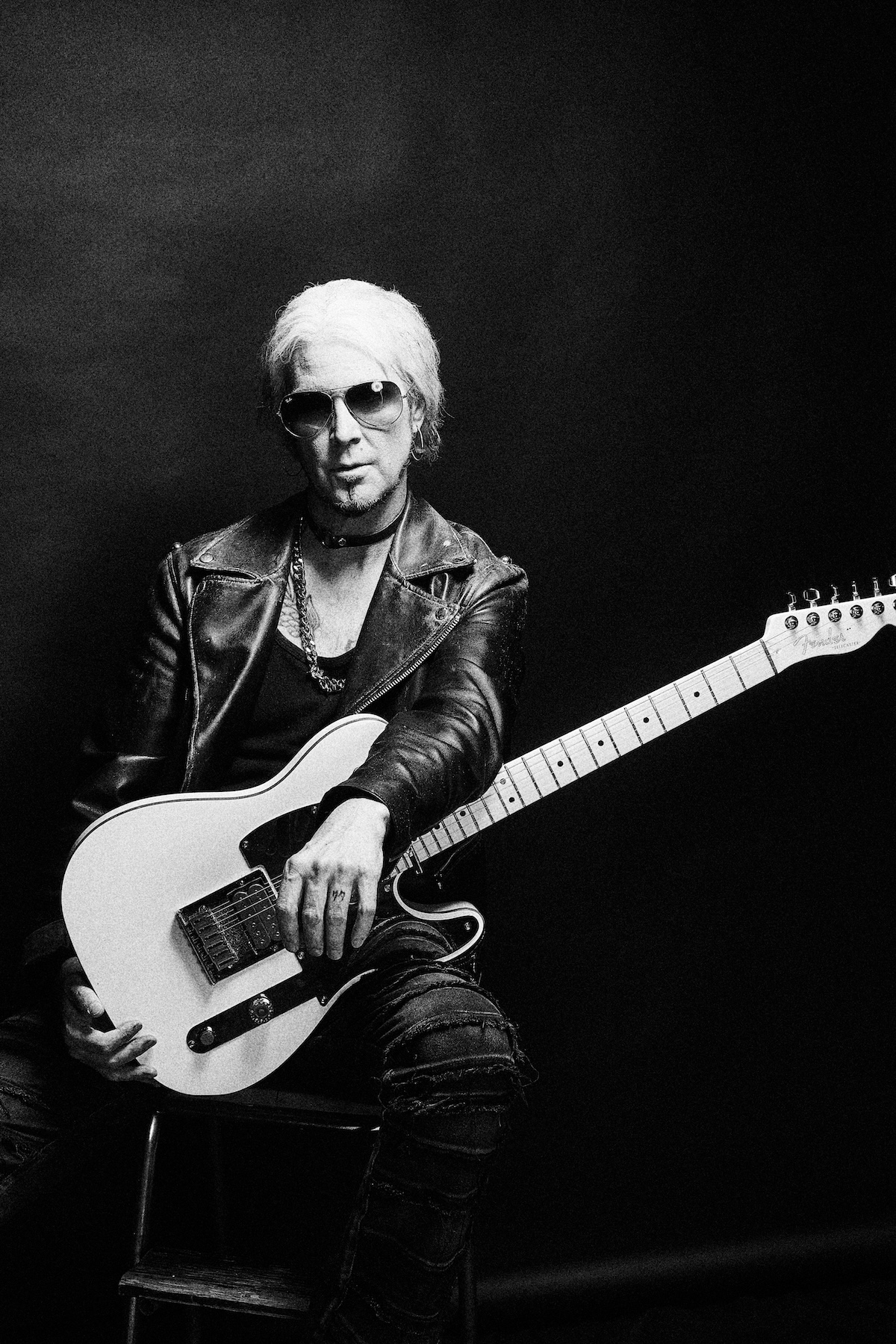
The former David Lee Roth/Rob Zombie/Marilyn Manson axe man, who is currently filling Mick Mars’ boots in Mötley Crüe, also celebrates his beloved white Fender Telecaster (called “The Ghost”) on the title track, manipulating its strings with both heavy aggression and lighter whips of whimsy that feel cathartic.
Not to be confused with the band Ghost or any of their output, which might share some aesthetic qualities, this buoyant and bombastic record is less about mood or morbidity, and all about highlighting metallic mastery, making a statement that doesn’t need words. Ten studio albums in, instrumentalism is 5’s thing and he does it well.
There’s also industrial-style menace (“Wicked World,” “Strung Out”) that could drive a dance floor with the right remix, and a showcasing of finesse with other genres, like bluegrass and old-timey jazz. “Moon Glow,” with Matt Bissonette and Marco Minnemann, makes for a sweet prelude to the bluesy and jam-like “You, Me And The Devil Makes Three,” which is touted as featuring his bandmate Tommy Lee on “hand claps and foot stomps.”
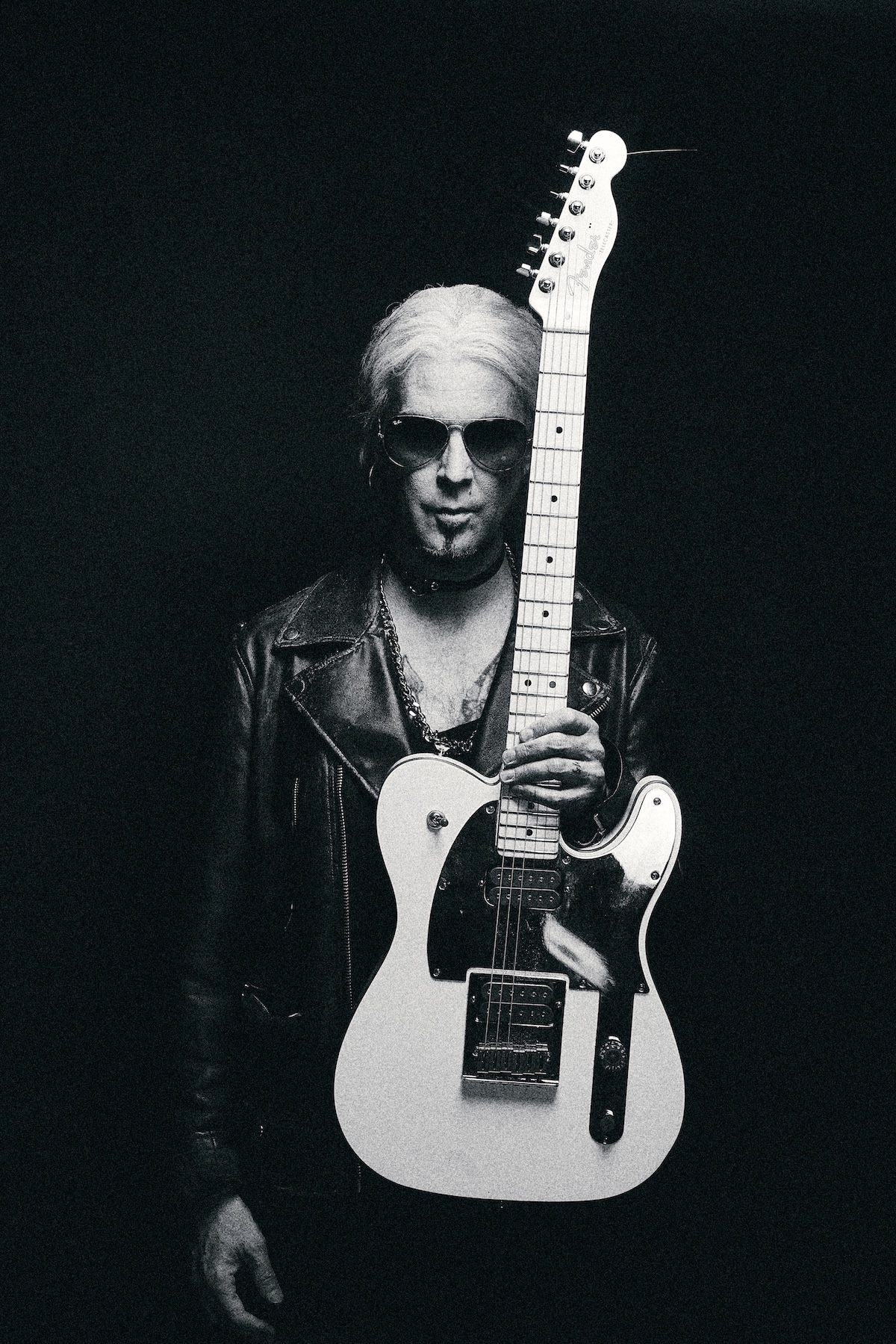
A cinematic feel drives some cuts too, like “L.A. Express” and “Fiend” (the latter featuring drum great Kenny Aronoff). Both conjure speed and excitement, meshing retro elements with futuristic flourishes that have the urgency of an action flick fight scene or car chase.
“Deviant” might be the highlight here. With drum work from Jane’s Addiction’s Stephen Perkins, it’s the grooviest number on the record, and also the giddiest melding of musical maneuvers and pummeling personal stylings.
Everything on Ghost has an otherworldly feel to it that won’t come as a surprise to 5’s fans. Though he prides himself on playing note for note from the iconic records he gets to perform on stage (especially when it comes to the Crüe, which he joined in late 2022), he clearly relishes the freedom of noodling out on his own material. It’s a controlled yet cosmic chaos that brings to mind one of his biggest idols, Ace Frehley.
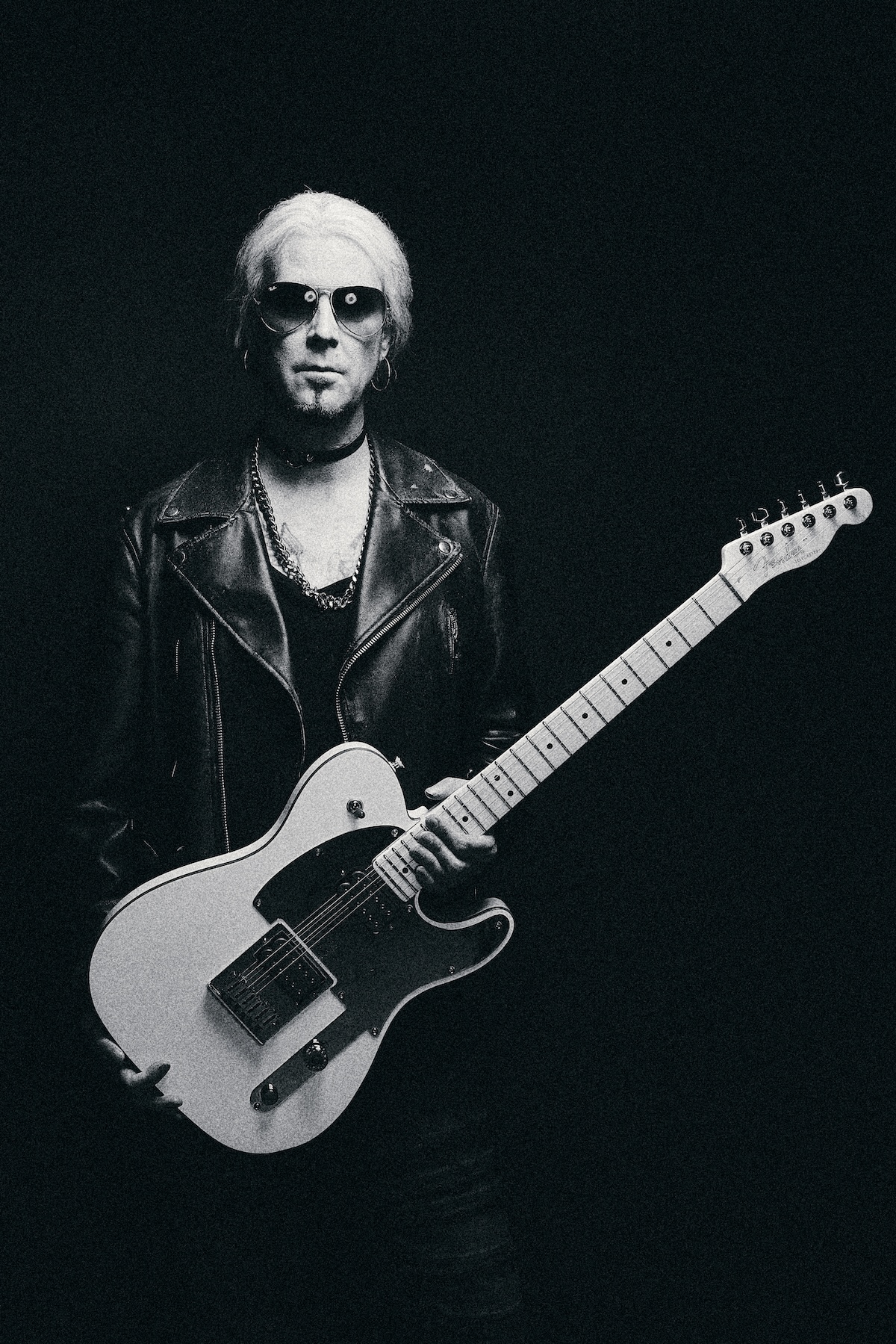
The owner of one of the biggest and best collections of KISS memorabilia in the world (he even opened it to the public as a museum earlier this year), 5 was also a close friend of Frehley. The recently departed Spaceman influences him heavily to this day, from the white face paint that graces this album’s cover to the grandiosity and grit of their playing styles.
Beyond the occasional podcast appearance, it’s telling that 5 continues to communicate in an untraditional way on record, with no singing or lyrics, just licks, taps, picks, and the random sample. Though he is clearly inspired by guitar gods from the past, he is also consistent about forging new paths. Ghost evokes new levels of musical mastery, and a relentless spirit that despite some wild soundscapes, feels very real and very alive.
To see our running list of the top 100 greatest rock stars of all time, click here.
Bono, The Edge Revisit U2 Classics At Guthrie Prize Ceremony 22 Oct 11:55 AM (17 hours ago)
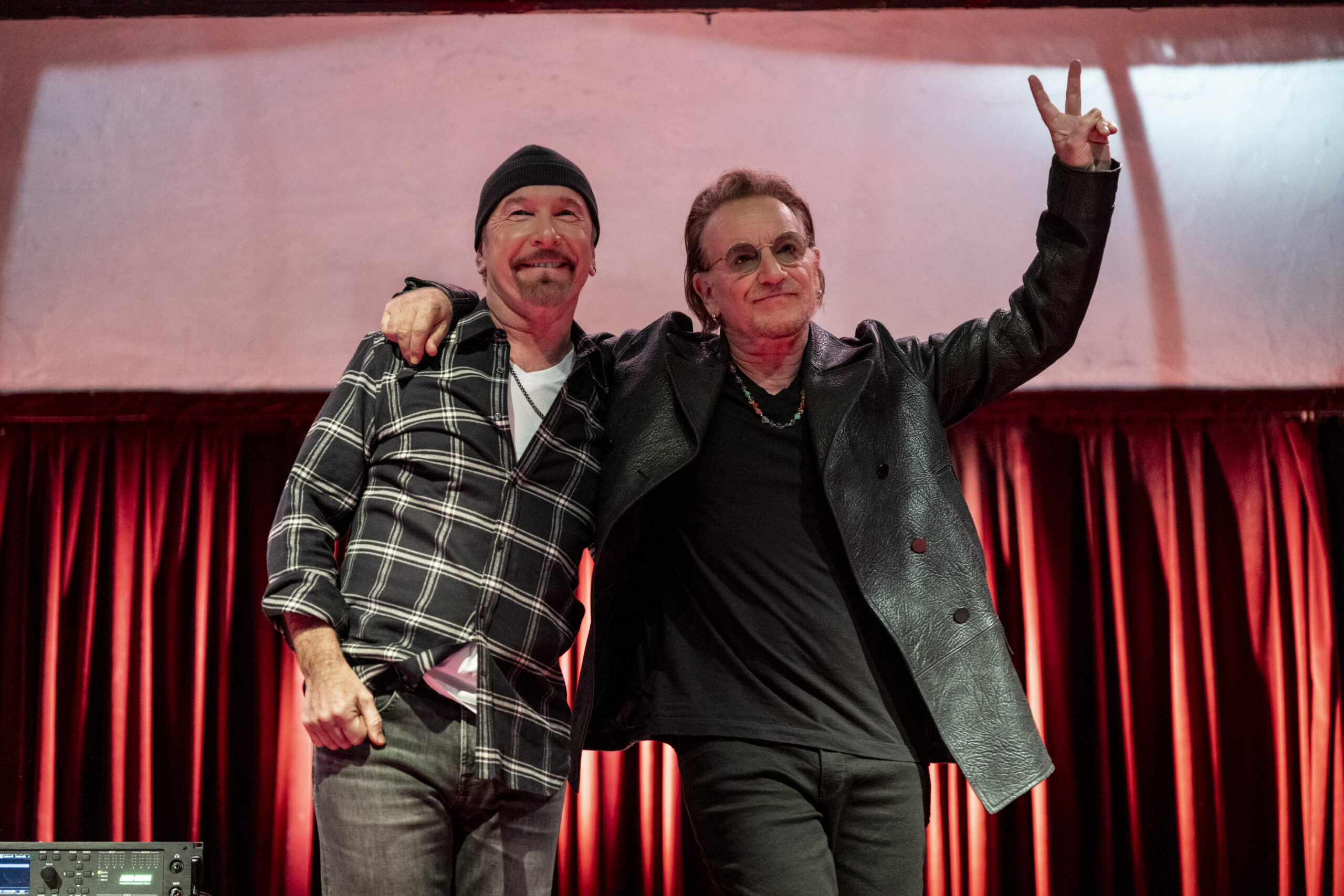
U2’s Bono and the Edge dipped into their back catalog during a six-song set last night (Oct. 21) as part of their Woody Guthrie Prize ceremony at Cain’s Ballroom in Tulsa, Ok., and even unveiled some lyrics for an in-progress song that may appear on their next album.
The duo rattled off “Running To Stand Still,” “Mothers of the Disappeared,” “Sunday Bloody Sunday,” “One,” “Pride (In the Name of Love)” and “Yahweh” in addition to a cover of Guthrie’s “Jesus Christ,” and later sang some a capella lines from the Beatles’ “A Hard Day’s Night” when accepting the award.
More from Spin:
- John 5’s Cathartic Instrumentalism
- ‘Dream’ On: Miley Records New Song For Third ‘Avatar’ Film
- For Rob Thomas, Music Has Always Led the Way
The Woody Guthrie Prize is given annually to artists who “best exemplify Guthrie’s spirit and work by speaking for the less fortunate through music, film, literature, dance or other art forms and serving as a positive force for social change.”
“Bob Dylan really did bring us to the place where the song was an instrument to open up worlds,” Bono said. “And the world of Woody Guthrie, I wouldn’t have entered if not for Bob.” He added, “America is the greatest song still yet to be written. The poetry is there but it’s still being written … don’t imagine it will continue to be extraordinary on its own, that if you fell asleep and woke up in 20 years, the world would be fairer or freer. It won’t. That’s not the way it works.”
“Our favorite protest songs always had a sense of vision, something to aim for,” said the Edge. “You don’t talk about the darkness — you make the light brighter.”
During a protest song-oriented discussion with producer T Bone Burnett, Bono admitted, “you can’t write a song to order,” but then proceeded to recite lyrics from an unfinished song about the late Palestinian activist Awdah Hathaleen: “one father shot / three children crying / if there is no law / is there no crime / if there is no hope / what’s there to rhyme / history is written / one life at a time.”
It was the first concrete evidence of material intended for the follow-up to 2017’s Songs of Experience, a release date for which has not been announced.
U2 hadn’t set foot in Cain’s Ballroom since performing there on April 4, 1981. The band returned to Tulsa again in 1983 and 2018 and had previously joked that its members were looking “forward to legally buying their own pints this time around.”
Bono, Edge, Adam Clayton and Larry Mullen Jr. join past Guthrie Prize recipients including Pete Seeger, Mavis Staples, Joan Baez, Bruce Springsteen and 2024 honoree Tom Morello.
To see our running list of the top 100 greatest rock stars of all time, click here.
‘Dream’ On: Miley Records New Song For Third ‘Avatar’ Film 22 Oct 10:17 AM (19 hours ago)

Miley Cyrus has been tapped to record a new song, “Dream As One,” for the upcoming third installment in director/writer James Cameron’s Avatar series, Fire and Ash, which will arrive in theaters on Dec. 19. The track will be released Nov. 14 through Columbia/Sony.
Cyrus contributed to the song’s music and lyrics in tandem with Andrew Wyatt, Mark Ronson and the Grammy-winning Simon Franglen, who also composed the film score. “Dream As One” will be heard during Fire and Ash‘s end credits and will be featured on its original soundtrack, due Dec. 12.
More from Spin:
- John 5’s Cathartic Instrumentalism
- Bono, The Edge Revisit U2 Classics At Guthrie Prize Ceremony
- For Rob Thomas, Music Has Always Led the Way
“Honored to support Avatar: Fire and Ash with an original song I’ve written with Mark Ronson and Andrew Wyatt,” Cyrus wrote in an Instagram post that teases a portion of the song. “Having been personally affected by fire and being rebuilt from the ashes, this project holds profound meaning for me. Thank you, Jim, for the opportunity to turn that experience into musical medicine. The film’s themes of unity, healing and love resonate deeply within my soul, and to be even a small star in the universe the Avatar family has created is truly a dream come true.”
Fire and Ash stars Sam Worthington, Zoe Saldana, Sigourney Weaver, Stephen Lang, Kate Winslet and Edie Falco. It’s the follow-up to 2022’s The Way of Water, which was itself the sequel to the 2009 original. Two additional films are expected in 2029 and 2031.
As for Cyrus, she has kept a low profile following the summer release of her ninth album, Something Beautiful, which was accompanied by a musical film of the same name that’s available on Disney+ and Hulu.
To see our running list of the top 100 greatest rock stars of all time, click here.
Ima Robot Unearth Lost 2000s LP ‘Search and Destroy’ 22 Oct 7:46 AM (22 hours ago)
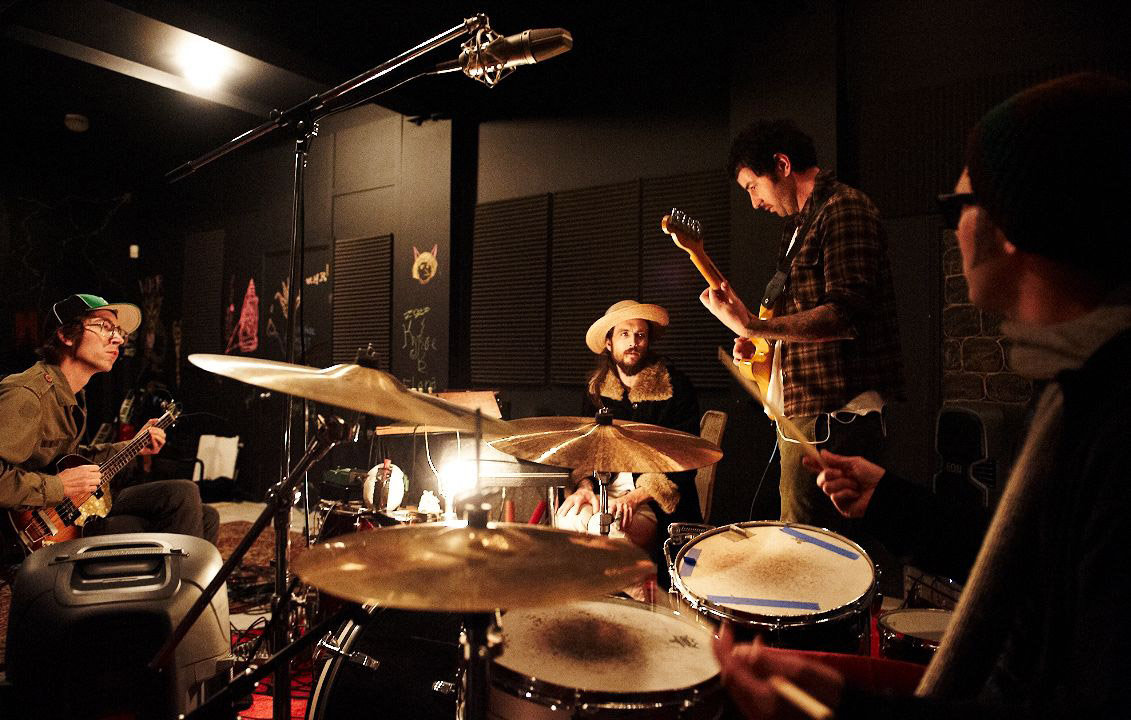
Early 2000s band Ima Robot has unearthed a lost album from that time period, Search and Destroy, which will finally see the light of day Nov. 14 through Community Music. The title track is out now and can be sampled below.
Founded by future Edward Sharpe and the Magnetic Zeros frontman Alex Ebert in the late 1990s, Ima Robot eventually signed with Virgin Records for its 2003 self-titled debut. The album pricked up the ears of adventurous listeners thanks to its au courant blend of jittery indie rock and more dance-leaning music, but was not commercially successful beyond a core group of devoted fans.
More from Spin:
- Who Charted? Edward Sharpe and Sigur Ros Crack the Top 10
- See Walkmen, Edward Sharpe, Bahamas Bring Warm Jams to Late Night
- Edward Sharpe’s Alex Ebert: ‘We’re Not the ’60s Ride At Disneyland’
“I hope it inspires people to remember that not everything has to be the same,” Ebert told SPIN at the time of the album’s release. “You can do different things and you can be fresh and you can listen to fresh music and things don’t have to stay in one area, you know? We all get into ruts where we forget that things can be different. The only comments I’ve ever seen are like, ‘not only did they pull from this band and that band, but they also pull from this little-known band,’ and I have no idea who these bands are. Never heard of them. No idea. It’s kind of cool for me because I get to build up my record collection that way. I like to call our music high-clash because to me, it’s elevated. It’s not metal meets rap. To me, it’s just everything all across the board.”
In the wake of the debut, Ima Robot wrote a wealth of songs while preparing for its second album, many of which were pressed in extremely limited quantities as Search and Destroy and sold at a handful of 2006 shows — much to the chagrin of Virgin.
“Never uploaded online nor formally distributed, it might have disappeared entirely if not for the dedication of a devoted few Robot heads who preserved its traces,” reads a new band bio about the project. “Today, echoes of that fervor endure with original CDs fetching hundreds of dollars on MusicStack and other resell sites, a testament to the enduring allure and quiet obsession the record inspired.”
“In a lot of ways, this stuff sounds like the original Ima Robot, the pre-signed fuck-it,” Ebert says now. “There’s a lightness to the whole thing. It feels more like the original concept, a reclaiming of the initial vibe.”
Ima Robot has been inactive since 2011, while Edward Sharpe and the Magnetic Zeros have only played live on a handful of occasions since 2016.
To see our running list of the top 100 greatest rock stars of all time, click here.
For Rob Thomas, Music Has Always Led the Way 22 Oct 6:30 AM (23 hours ago)
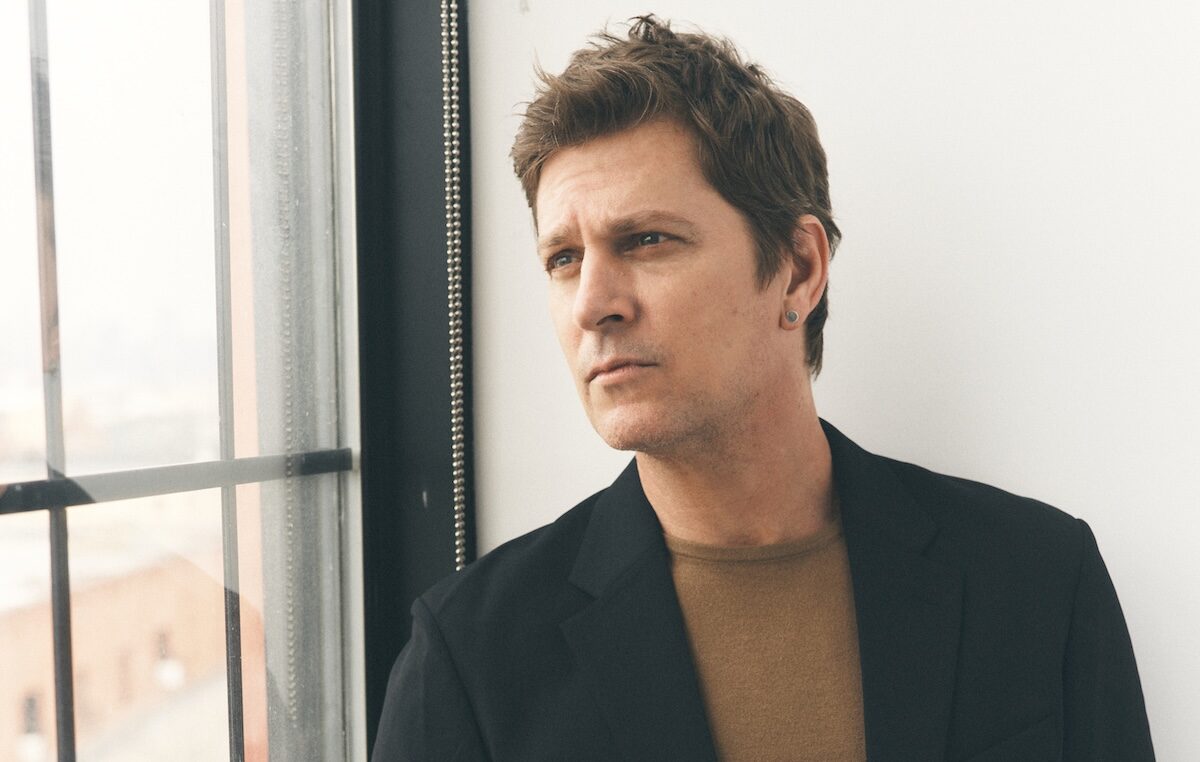
As I greet Rob Thomas on our video call, he asks me if I’m getting any of “the weather” that they’re experiencing in the New York City area, where he lives.
Unaware of the torrential storms that were, at the time of our call, getting ready to pound his region and leaving it in a state of emergency, I tell him that here in southeast Tennessee, it’s finally feeling like fall. As I sit on my large front porch, clear blue skies are overhead with a moderate temperature of 76 degrees and practically no humidity. There’s a wonderful breeze that’s causing the first few brown leaves of the season to fall from the oaks in my front yard.
More from Spin:
- John 5’s Cathartic Instrumentalism
- Bono, The Edge Revisit U2 Classics At Guthrie Prize Ceremony
- ‘Dream’ On: Miley Records New Song For Third ‘Avatar’ Film
I certainly didn’t mean to rub it in. But that’s okay. Thomas goes with it.
“Fall’s my favorite time of year,” he says. But Thomas will soon be departing on the Australian leg of his All Night Days tour—supporting his sixth solo album of the same name, released September 5th—and won’t be able to enjoy the fall foliage he loves so much.
Accompanying the Matchbox Twenty frontman is his 27-year-old son, Maison, whom he recently hired as his solo band’s guitarist. Thomas’ son also has his own band, the Lucky, which opened for Thomas during a few of his U.S. tour dates.
“He’s one of my best friends in the world,” says Thomas, wearing a black T-shirt, looking pretty much the same as he did almost 30 years ago, when Matchbox Twenty released its debut album, Yourself or Someone Like You, in 1996. “It’s been the most fun that he’s had. When I mentioned it, the first thing he said was, ‘This will be the most time we’ve gotten to spend together at one time.’ I thought that was the sweetest thing ever, because I felt the same way.”
Growing up, however, Thomas didn’t have the same experience with his own parents.
Thomas’ mother, Mamie, was 16 when she gave birth to his older half-sister, Melissa, and 21 and remarried by the time Thomas was born in Landstuhl, Germany. His father, Bill, a sergeant in the U.S. Army, left when he was 2, due to Thomas’ mother’s alcoholism.
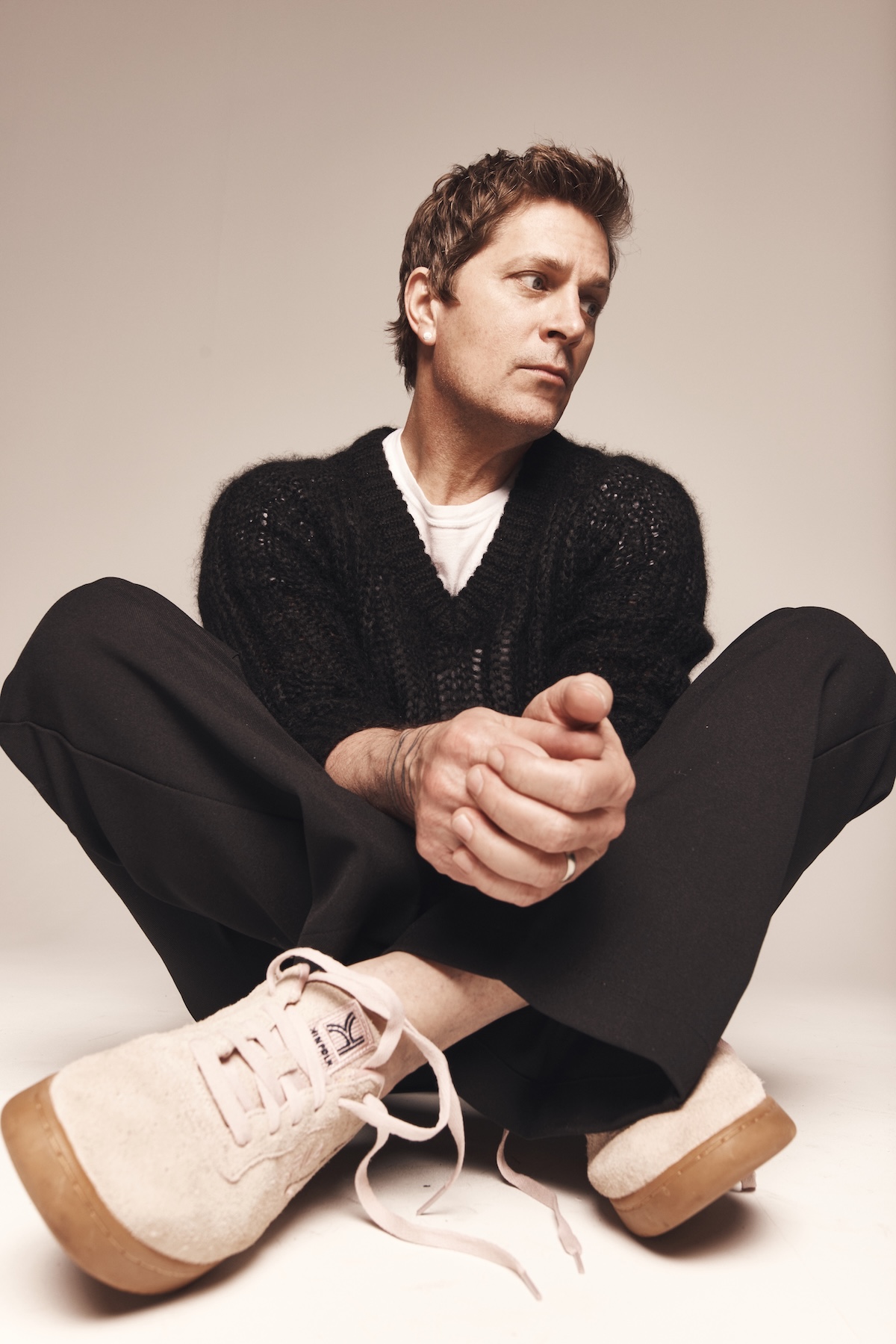
“Me and my dad weren’t very close because my dad couldn’t handle my mom, and I understand that, but at the same time, he lumped me in with her and then cut us both off as a means of his survival,” Thomas says.
With very little money, Thomas, Melissa, and his mother moved to a trailer park in South Carolina to be close to his maternal grandmother, who ran a small gas station, where she sold moonshine and marijuana under the counter. When he was 10, they moved to Florida.
While Thomas says he and his mother could be very close, their household was far from stable. “It was a very Jekyll and Hyde situation,” he says. “[She was] the kind of woman who would buy extra gifts at Christmas, so if anybody came by, she’d have something to give to people. The kind of person that, when I was a young Dukes of Hazzard fan, came into my room to explain to me why that giant flag on my wall didn’t mean the General Lee. Everyone loved my mom. When they met my mom, she was this light, and she was so much fun, and everybody thought that she was the best. And then it would swing on a dime to these very physical, violent situations.”
Two years later, his sister left home to get married, and his mother was diagnosed with Hodgkin lymphoma, which meant Thomas was forced to be her sole caretaker at 12, which inspired one of Matchbox Twenty’s biggest hits, “3 AM.”
Thomas’ mother eventually went into remission, and Thomas felt his relationship with her strain once again because of her drinking.
It was in spite of his mother that he found music.
“It wasn’t something that she encouraged,” he says. “It was something that she openly told me I was never going to be good at, and I was never going to make it at, and I needed to let it go. Which I think in her own way was probably her protecting me, because it does seem like a pipe dream to do something like that.”

Dropping out of high school at 17, he hitchhiked around the South, slept on park benches and at friends’ houses, and along the way, met a group of musicians when he moved to Orlando.
“I’m not sure if it was that I was looking for music or if it was just something that was so comforting to find, like a fraternal group that I felt like took me in and I could start to build an extended family, where maybe I didn’t have one at home,” he says.
In 1993, Thomas, along with bassist Brian Yale, drummer Paul Doucette, and guitarists Jay Stanley and John Goff, formed Tabitha’s Secret. The band had a loyal following but eventually broke up. Thomas, Doucette, and Yale formed another group, this time with Adam Gaynor and Kyle Cook on rhythm and lead guitar, respectively: Matchbox Twenty.
With hits like “Push,” “Real World,” and “If You’re Gone,” among others, Matchbox Twenty dominated the late 1990s and early 2000s. The band took several breaks over the years. Thomas put out five solo albums between 2005 and 2021, sporadically reuniting with his Matchbox Twenty bandmates to tour and release two more records, 2012’s North and Where the Light Goes in 2023.
It was during the sessions for Where the Light Goes that Thomas began writing the songs that would appear on All Night Days. While three of his solo songs ended up on Matchbox Twenty’s fifth album, “I Believe It,” and “No Good at Loving You” were tracks the band worked on that landed on Thomas’ new album.
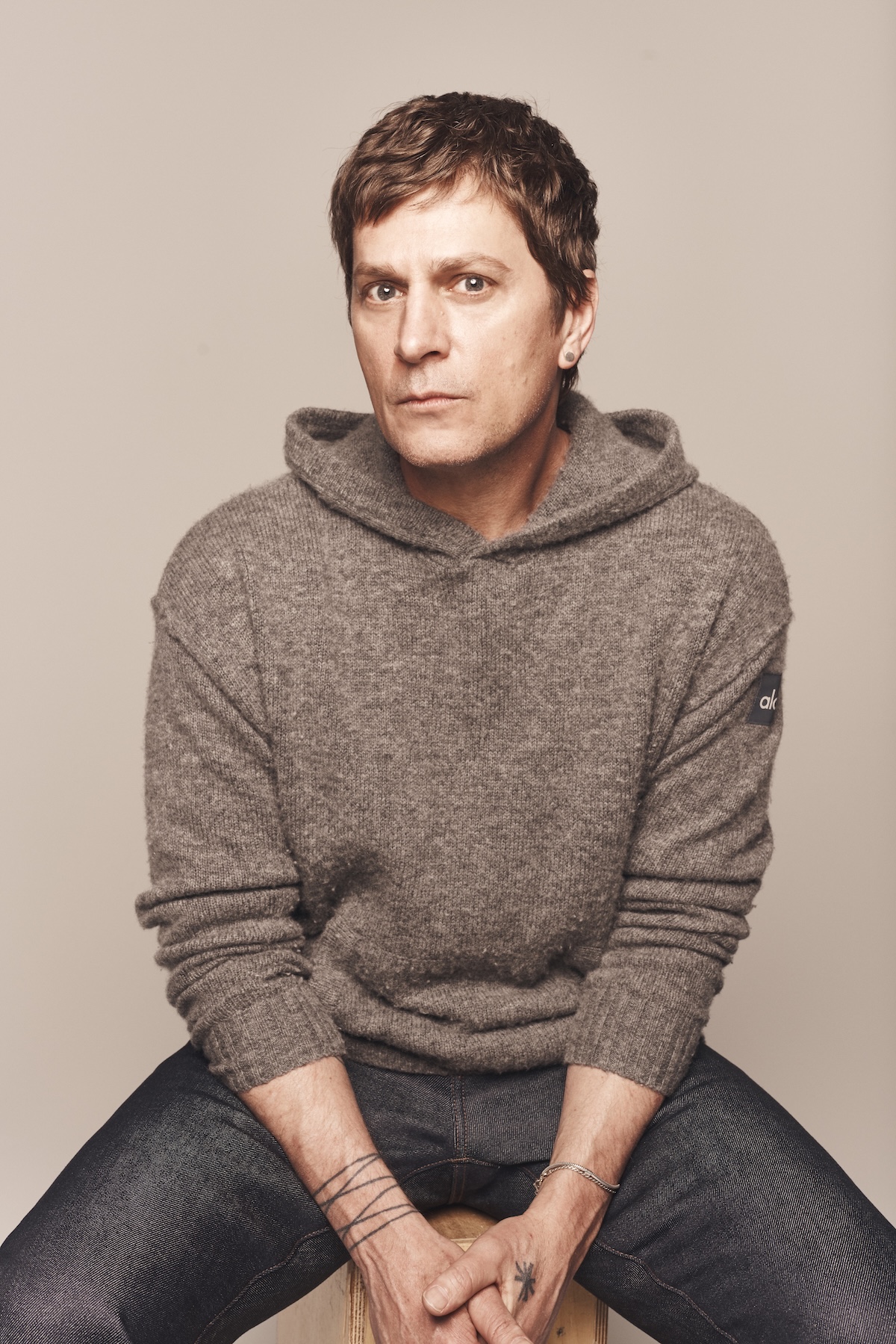
But it’s the song “Thrill Me” that holds particular weight with him at this stage in his life, a song that’s about his wife, Marisol Maldonado.
“I’ve been with my wife for 27 years,” he says. “We’ve had spectacular fights. But she’s the closest person in the world to me. And I feel like ‘Thrill Me’ is the kind of love song that I probably couldn’t have written when I was younger. I think as I get older, there’s no fear of sentimentality.”
With sentimentality comes vulnerability. And “Hard to Be Happy,” the album’s third track and lead single, which is, as of this writing, at No. 9 on the Billboard Adult Contemporary chart, is a perfect example of that. With lyrics such as, “So if you see me crying / I don’t need no consolation / I just need some time / And I know that I’m gonna be fine but I can’t say why,” I ask Thomas if he is happy.
“No,” he says. “I mean, I feel like I can find happiness pretty easily. And that just means finding some peace and solitude in your own head. The end is hurtling at us at a greater speed every day. And everything that we do to some degree is just to try and not think about the fact that that’s happening. So [to] that degree, I don’t trust anybody who just says, ‘Oh, I’m happy,’ because you’re hiding something.”
He admits, though, that at 53, he’s happy more times than he’s not. And that’s partly because he’s always surrounded himself with male friends who support each other, like his Matchbox Twenty bandmates.
“The biggest joke we always have is somebody says, ‘Oh man, you look great.’ And I’m like, ‘Oh, but I’m dead inside,’ and I’m only half joking. Not being aware that that exists inside of you means you neglect it. And if you neglect it, then it grows and it becomes an even bigger part of you.”
He tells me that before his mother passed away in 2007 at 55, he lied to her over the phone about not being able to visit her. “I just couldn’t take the drama,” he says, “And then, when she passed, I think there’s a piece of me that stayed there. Like my emotional growth just kind of stopped in that little zone, so much so that it’s palpable. There was also this guilty, guilty feeling of how much easier things were going to be. That took a long time to just be okay with feeling that way.”
Thomas believes emotional balance is something you have to find in your own way. For him, ever since he was a runaway teenager, music has been the answer. He is a man who feels comfortable baring his soul. No subject is off limits. He doesn’t save his vulnerability for his songwriting. He’s completely honest about the effects of being a child of an alcoholic.
Thomas admits that he’s a heavy drinker. “It’s not healthy, and you figure I would learn by now,” he says. “But I think I didn’t also come along with the unbelievably volatile personality that was attached to my mom; it always just kind of comes across as like, ‘Well, look at Rob. He gets so friendly when he drinks.’”
It’s something his wife and therapist have talked to him about, though he tells me he’s not quite ready to stop. He also talks to me about his OCD, his compulsive counting and touching tendencies, all of the little ticks he’s adopted in an attempt to control his environment out of a fear that something bad will happen if he doesn’t; a common affliction from childhood trauma as a means to cope. His songwriting, he says, is a product of that as well.
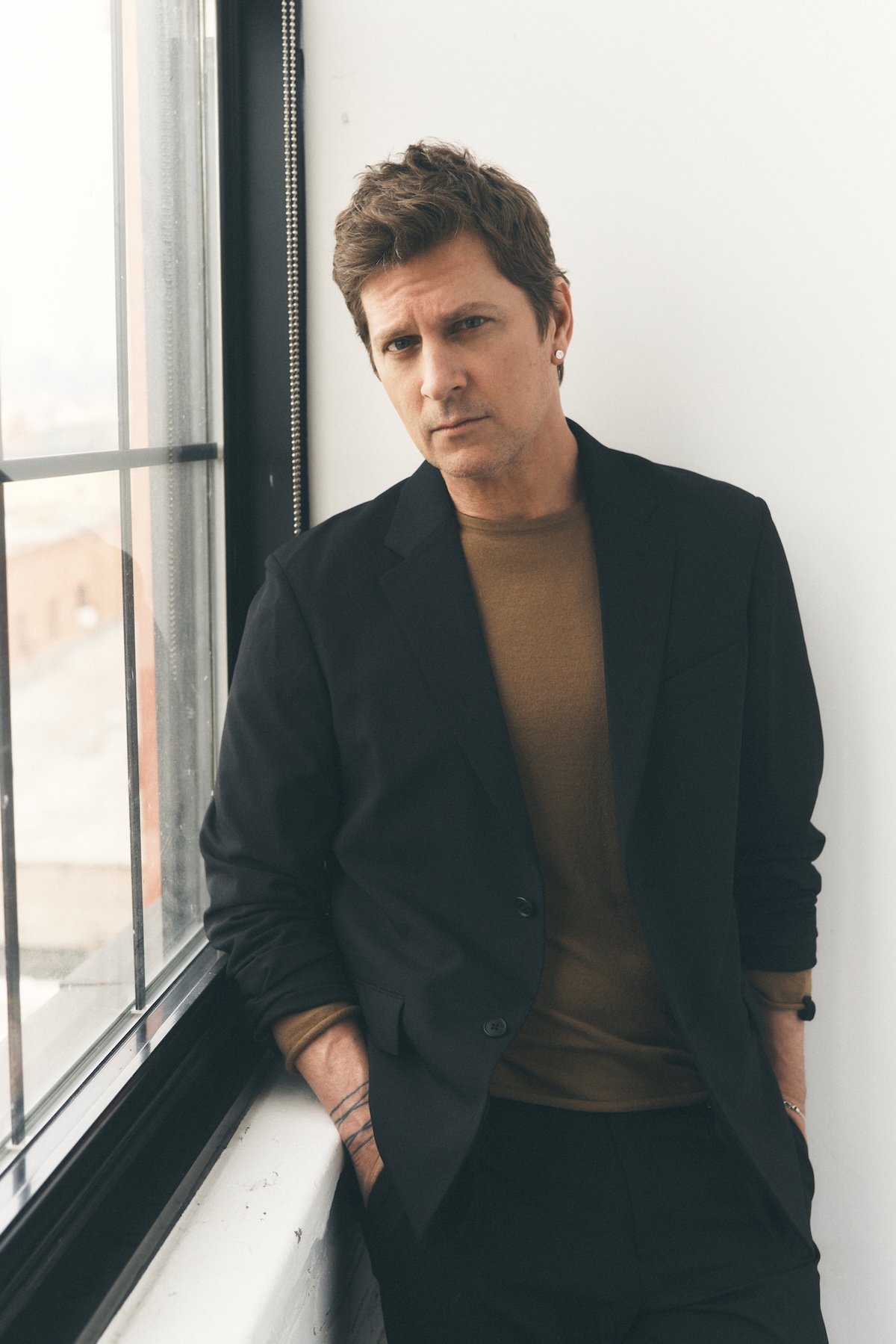
“I think that writing manifests itself in the same way that I can’t have too many unanswered emails, I have to go through and I have to make sure that they’re cleared out in my head if I’m writing,” he says. “And eventually I need to get that valve released so I can add more songs into there. If not, I really feel like a physical buildup in my head of all of these songs and melodies and ideas that are floating around.”
With the 30th anniversary of Matchbox Twenty’s debut release approaching next year, Thomas and his bandmates have been chatting about how to commemorate the occasion, though no plans have been made yet. He looks back at the band’s success as a gift and how their definition of success has changed over the years. When they started out, success meant getting a record deal. Then it meant having one of their albums go gold. After, it meant continuing to churn out more hits, year after year.
That’s a Herculean task for any band to achieve.
It was Bruce Springsteen who helped Thomas change his perspective while the two were at Rock in Rio 2013, that there were going to be periods where the music doesn’t feel like it’s connecting, that the band may not seem relevant. But Springsteen urged him to be patient and to keep going, because music is passed down to the next generation. In other words, the pendulum will swing back the other way eventually.
Springsteen, of course, was right. Matchbox Twenty’s 2023 Slow Dream tour was one of the band’s most successful, grossing $35 million from its North American dates.
Thomas realizes that most of the fans coming to Matchbox Twenty shows aren’t coming to hear new songs. And he’s okay with that.
“I had a really nice moment in my career where I was part of the zeitgeist,” he says. “If you have that moment and you do the right thing with it, then that can be a career as you get older. But eventually you have to let that moment go. There’s nothing cooler than seeing an old biker singing every word to ‘3 AM’ next to an 8-year-old girl who’s crying because she’s singing ‘3 AM.’ It’s a piece of success that feels very real, but it’s not something that we could have ever anticipated.”
To see our running list of the top 100 greatest rock stars of all time, click here.
The Wedding Singer/Novelist 22 Oct 6:00 AM (23 hours ago)
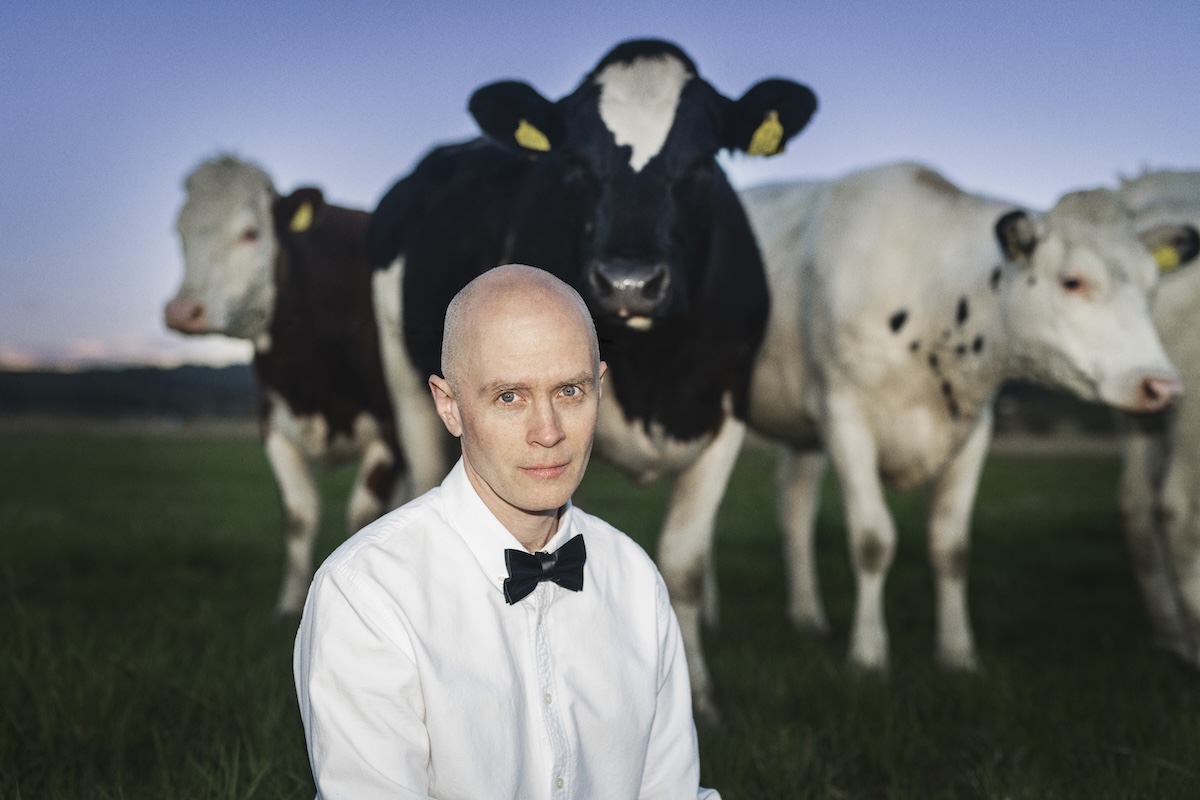
When Jens Lekman released “If You Ever Need A Stranger (To Sing at Your Wedding)” in 2004, it wasn’t meant to be a literal invitation.
“Wedding singers are these seasoned, tough, hardworking, amazing musicians and singers who can perform for hours. They know every song in the world. I did that for a little while when I needed the work. I toured around with my own PA, playing covers for five hours, and I was terrible at it to be honest,” Lekman shares with me over Zoom from Gothenburg, Sweden. “I don’t know where they get the stamina from to perform for that long.”
More from Spin:
- John 5’s Cathartic Instrumentalism
- Bono, The Edge Revisit U2 Classics At Guthrie Prize Ceremony
- ‘Dream’ On: Miley Records New Song For Third ‘Avatar’ Film
Yet people did start inviting him. And not just a few times; as of October 2025, Lekman has performed at approximately 150 weddings, singing and sometimes writing original songs for the couples. It shows the unexpected impact just one song can have on an artist’s life, especially as his experiences as a wedding singer have now inspired Lekman’s latest projects: a new album on Secretly Canadian and a novel he co-wrote with bestselling author David Levithan (Nick & Norah’s Infinite Playlist), both titled Songs for Other People’s Weddings.
“It started eight years ago as a TV show, actually,” Lekman explains. Collaborating with an American film director ( “I can’t give out the name of the filmmaker, sorry”), Lekman developed several episodes of a series based on his wedding gig anecdotes… until producers sadly pulled the plug. The idea then sat on Lekman’s shelf until the pandemic, when he read Levithan’s 19 Love Songs. Reminded of his project, Lekman contacted the writer and soon, “I would write songs for fictional couples, send them to (Levithan), and he would write the chapters backwards from that.”
Their plan was to create a novel and accompanying album, but according to Lekman, “Halfway through, I started realizing that the album was going to be very confusing because it was just songs for fictional couples that didn’t make sense without the book.” So in came “J,” the wedding singer whose arc provides, “the narrative concept album that you now have in your hands.” He considers J, “Someone I could have been, but I’m not,” with their lives diverging at the release of “If You Ever Need a Stranger (To Sing at Your Wedding).” Over time, Lekman feels J evolved into a mash-up of him and Levithan, as they spent hours discussing love and relationships to make sure J and his girlfriend V always felt true.
But the creative process for this novel and his albums are different from how Lekman approaches weddings. To any couples interested, it all starts with simply writing Lekman an email (via his website). You’ll start talking and, says Lekman, “At some point, I would interview you and whoever you’re getting married to, to get an idea of who you are and what your love story is about, and try to find some poetry in your relationship. I try to capture that and bring it to the ceremony.” To uncover that depth, Lekman asks the couple a variety of questions, from light ones about how they met, heavier ones like what love means to them, and fun ones like what songs would represent them individually and as a couple. “That’s something that always gets them going,” shares Lekman. “I usually ask them if they have a pet as well, and what relationship they have to their pets. Sometimes I’ve even written the song from the perspective of the pets.”
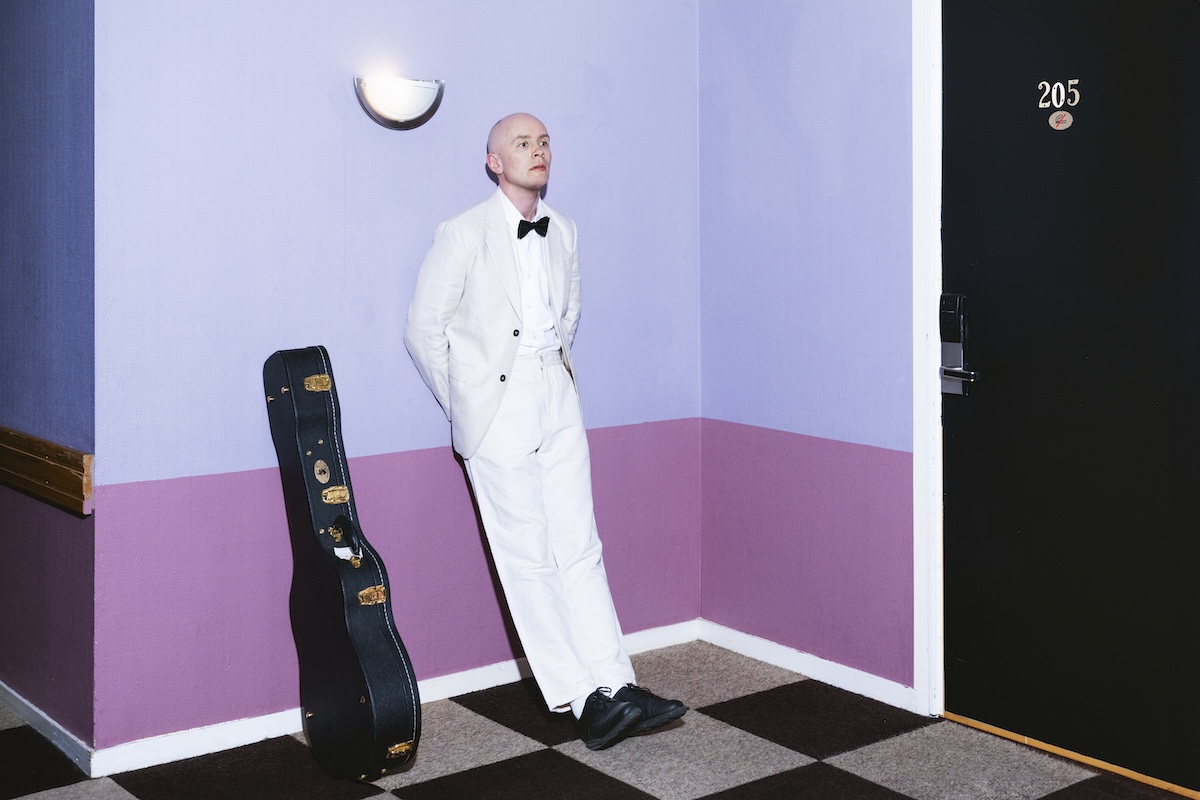
Writing songs for couples has helped Lekman better understand his own songwriting. “What it made me realize is that my best songs come out of me writing to someone else, when there is another person or a couple or whatever in mind that I’m addressing,” he shares. “I usually say that my biggest inspiration is my sent folder in my email program.” Lekman feels that addressing someone else helps limit the natural artistic impulse to look inwards. “I think all my best songs have always been letters to other people, like “A Postcard to Nina” or the project Correspondence that I did. And it’s the same with the couples. They are like love letters to the couples.”
Speaking with Lekman, it’s clear he’s not doing these weddings for the money (though, as he jokes on the album, they do pay better than Spotify). From his joyous smile and warm tone, you can feel how much he enjoys performing at weddings. “One thing I love about weddings, a reason why I do them, is because they are completely unpredictable. I like putting myself into awkward situations where I don’t know what I’m going to get,” Lekman offers. “There’s a scene in the book where I am supposed to jump out of a cake but they forget to make air holes and so I pass out in the cake… and that happened. You never know if you’re going to get punched in the face by someone’s uncle or if you’re going to go skinny-dipping with the guests.” This is a stark contrast to touring, which Lekman also loves—“There’s no other time when I feel at my most mindful”—but admits it is more predictable. “When I do a wedding, it’s much more about being in the moment and being open to improvisation,” he explains. “I’m still trying to learn from these weddings. I think there’s a lot of things there to pick up and transfer to the shows that I do at venues.”
Each wedding is unique, but Lekman does have a favorite type: “I’ve always liked the simple, stripped-down weddings where it’s very in the moment. There’s a wedding in the book that was based on a wedding that I played once on a hill. They just sent me the coordinates. I climbed up that hill. There was just the bride and the groom, the officiant, a photographer, and me. The ceremony was absolutely beautiful, very short. Then I played a song that I had written for them and then we just walked down the hill. Really beautiful.” On the flip side, when asked if there was ever a wedding he couldn’t connect with, Lekman just chuckles and offers, “I’ve played two or three billionaire weddings and they are… special.”
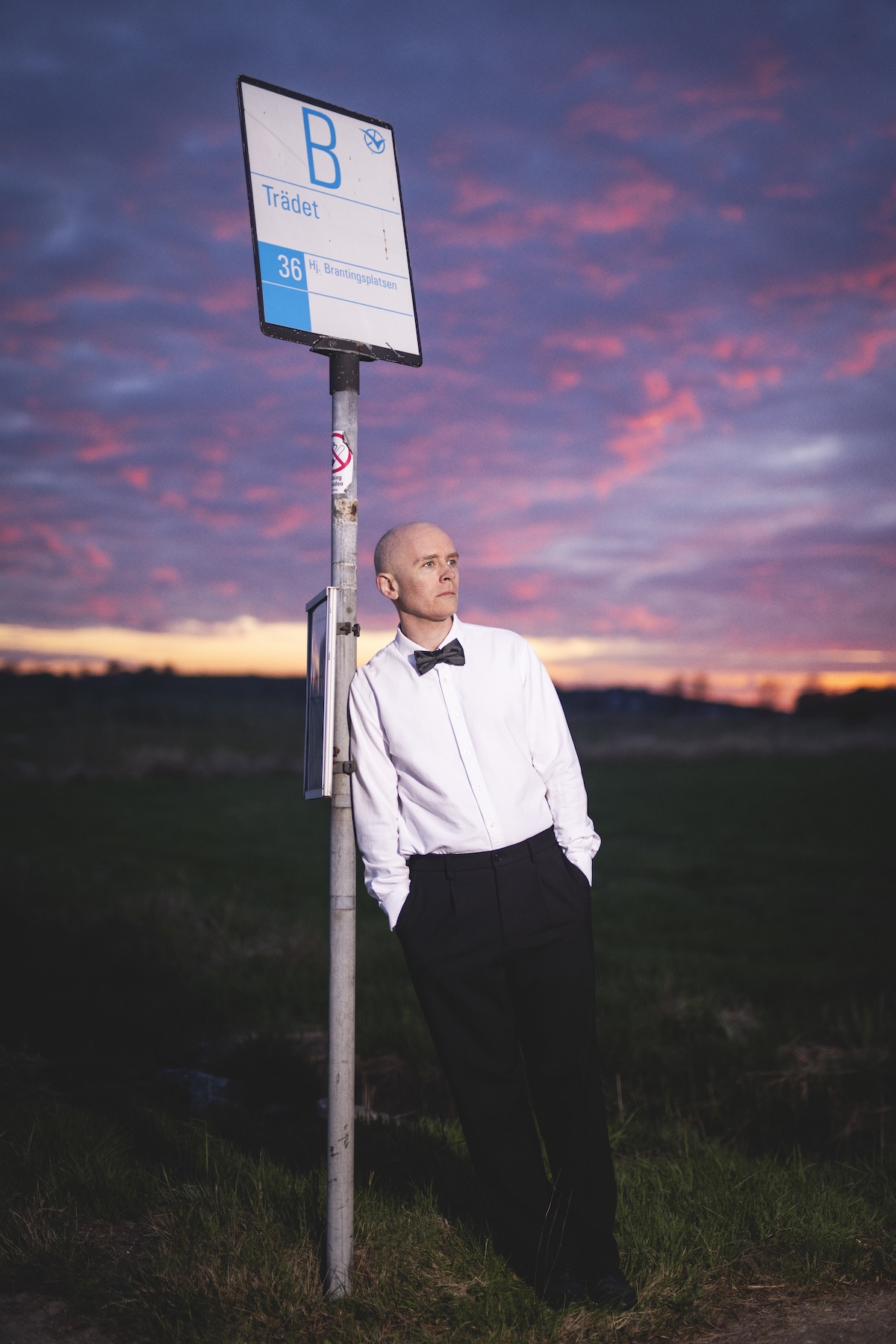
Billionaires aside, Lekman has no intent of being done with weddings, nor Songs For Other People’s Weddings. “I still think this hasn’t reached its final form yet. I feel like the album and the book are sketches for something that I haven’t yet been able to articulate,” he muses. Part of that might come to pass as he tours the album, starting in North America this November (with David Levithan joining for a few dates). But Lekman isn’t stopping there, adding, “I still think that it could be a musical or a TV show or something like that.”
What if someday this wedding singer becomes the one getting married? What song would Lekman want played at his own wedding? “I’ve never really thought about that. I guess I’ve always just seen myself as the guy who sings at weddings,” Lekman shrugs, then adds, “I know what song I would have at my funeral, but I don’t know what song I would have at my wedding.”
To see our running list of the top 100 greatest rock stars of all time, click here.
Ian Astbury On Resurrecting Death Cult: ‘It Gave Us a Knife’ 22 Oct 4:45 AM (yesterday, 4:45 am)
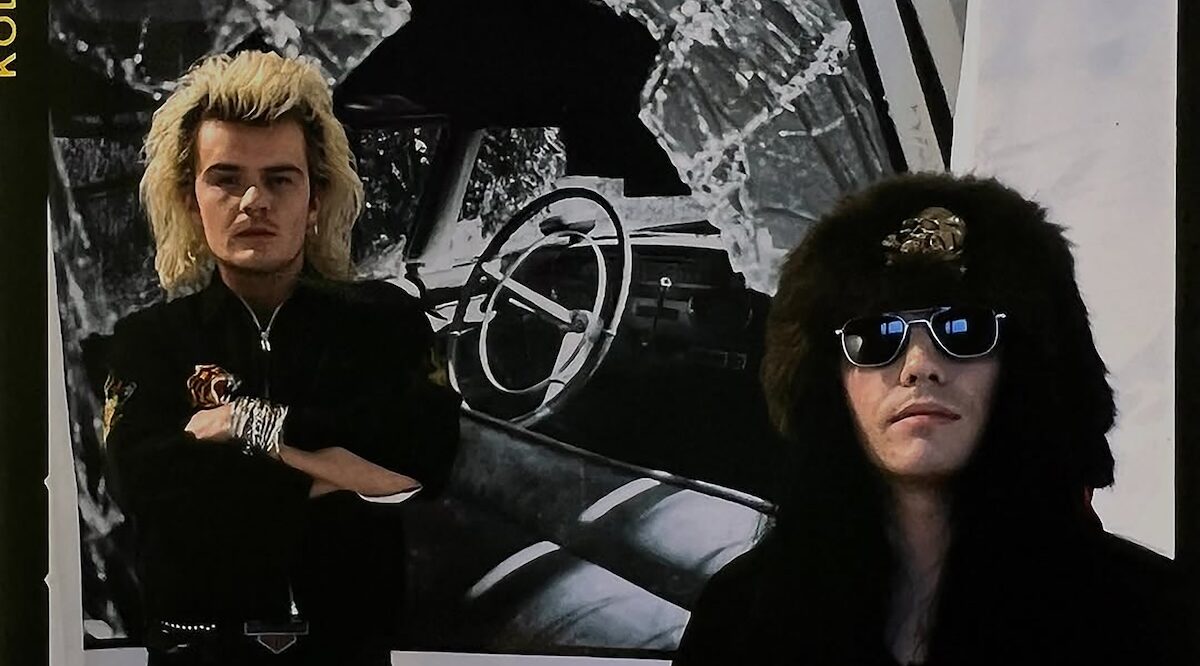
Ian Astbury is a true believer. As the singer for the Cult, he’s been immersed in the ritual of rock ‘n roll, of sweeping riffs and full-throated vocals, for four decades. He’s been fueled by a lifetime of art and music, shamanic and indigenous influences, spirituality and mysticism—all of it in service of a night of communion and release with an audience.
“I don’t really have hobbies. I love music,” Astbury says. “Nothing’s really changed since I was a child. I don’t go off on yachts. I don’t go off on vacations. I’ve usually got my nose in something that I’ll bring back to the pot. The muscle memory’s there.
More from Spin:
- John 5’s Cathartic Instrumentalism
- Bono, The Edge Revisit U2 Classics At Guthrie Prize Ceremony
- ‘Dream’ On: Miley Records New Song For Third ‘Avatar’ Film
“I mean, you can’t half-ass the Cult. There’s nowhere to hide.”
On the band’s current tour of North America, which ends October 30 at the Shrine Auditorium in Los Angeles, the Cult is digging deep into that history. The night opens with a set performed as Death Cult, an early post-punk, dark wave period for the group that Astbury says brings the Cult an added shot of inspiration.
“We were thrilled by it, and it bled into what we were doing currently with the Cult,” says Astbury. “I wouldn’t say we were reinvigorated, but it definitely put another gear in the Cult. It gave us an edge—an edgy edge. I think we’ve maintained a pretty good edge to the Cult as a live band, but this gave us something else. It gave us a knife and something that nobody else is able to do. It’s authentic.”
As he speaks, Astbury is at a corner table in a favorite French bistro in Los Angeles, surrounded by Belle Époque-style décor, with ornate mirrors and neat rows of wine bottles along the walls. It’s a quiet weekday afternoon, and he’s got a black doo-rag wrapped around his forehead, black hair knotted on top, skewered with a pencil as a makeshift hair pin.
This bistro has a full menu, but Astbury orders only an oat milk latte. He says he once saw Nick Cave here sitting alone at a table, writing into a notebook. He seemed to be settled in for a while, like it was a private sanctuary in town. Astbury, mostly based in L.A. since the late 1980s, appreciates the space for similar reasons.

The idea of resurrecting the Death Cult name came to Astbury after spending time with those old songs, while also noticing a new generation of artists embracing a similar darkwave sound (Vowws, Cold Cave, Molchat Doma, Twin Tribes, et al.), which he likes to call “gothic futurism.” It felt relevant to the times, and his feelings for a world racing toward a dead end in the 21st Century, which he describes with a grim stream of labels: “Zero point, dystopia, a glitch in the matrix…”
“I became fascinated with that period of music again,” Astbury says. “It just instinctually felt like picking up on a dystopian frequency.”
The idea to actually take the Cult back in that direction came to him one day, and he shared it with the band and its team: “I said, ‘What about doing Death Cult?’ Initially, it was like, ‘What? Really? How? Why?’”
That was in 2023, and with guitarist and creative partner Billy Duffy, the band revived the Death Cult name for live performances, starting with a sold-out show at the 1,600-capacity United Artists Theater (then known as the Theater at the Ace Hotel) in downtown Los Angeles. It was the first Death Cult set since 1983, and the first-ever in America, with a setlist focused mostly on material created before the Cult’s 1985 Love album.
The one-off L.A. show, followed by a short U.K. tour, showed there was a demand, even with the likelihood that for casual fans of the Cult’s hard-rock hit-parade, the name Death Cult would have little meaning. For serious followers familiar with the band’s history, it was an intriguing turn.
“People who like our music are quite discerning,” Astbury notes. “They go away and compare notes.”
For the band—also including drummer John Tempesta and bassist Charlie Jones—reaching back to that time wasn’t a stunt, but a jolt of adrenaline. Astbury compares it to injecting super-charged, platelet-rich plasma back into a human body.
Evidence will be offered on a new 16-track live album as Death Cult, Paradise Live, recorded in Manchester in 2023, and set for release in January.
Back in May, Death Cult were onstage at the Cruel World festival in Pasadena, California, during a particularly competitive hour in the misty late afternoon. At different points, their set overlapped with others by Nick Cave, Garbage, and Devo, but their crowd never thinned out, as Astbury and Duffy dove into lesser-known material from the gloomier Death Cult era.
Dressed that day in a long black tunic, and looking again like a holy man leading a spiritual event, Astbury tossed tambourines across the stage with reckless abandon. To his left was Duffy, cradling a white hollow-bodied electric guitar, accompanying the singer on “Hollow Man,” which unfurled with a nervous energy and faster pace than it once did in the 1980s.
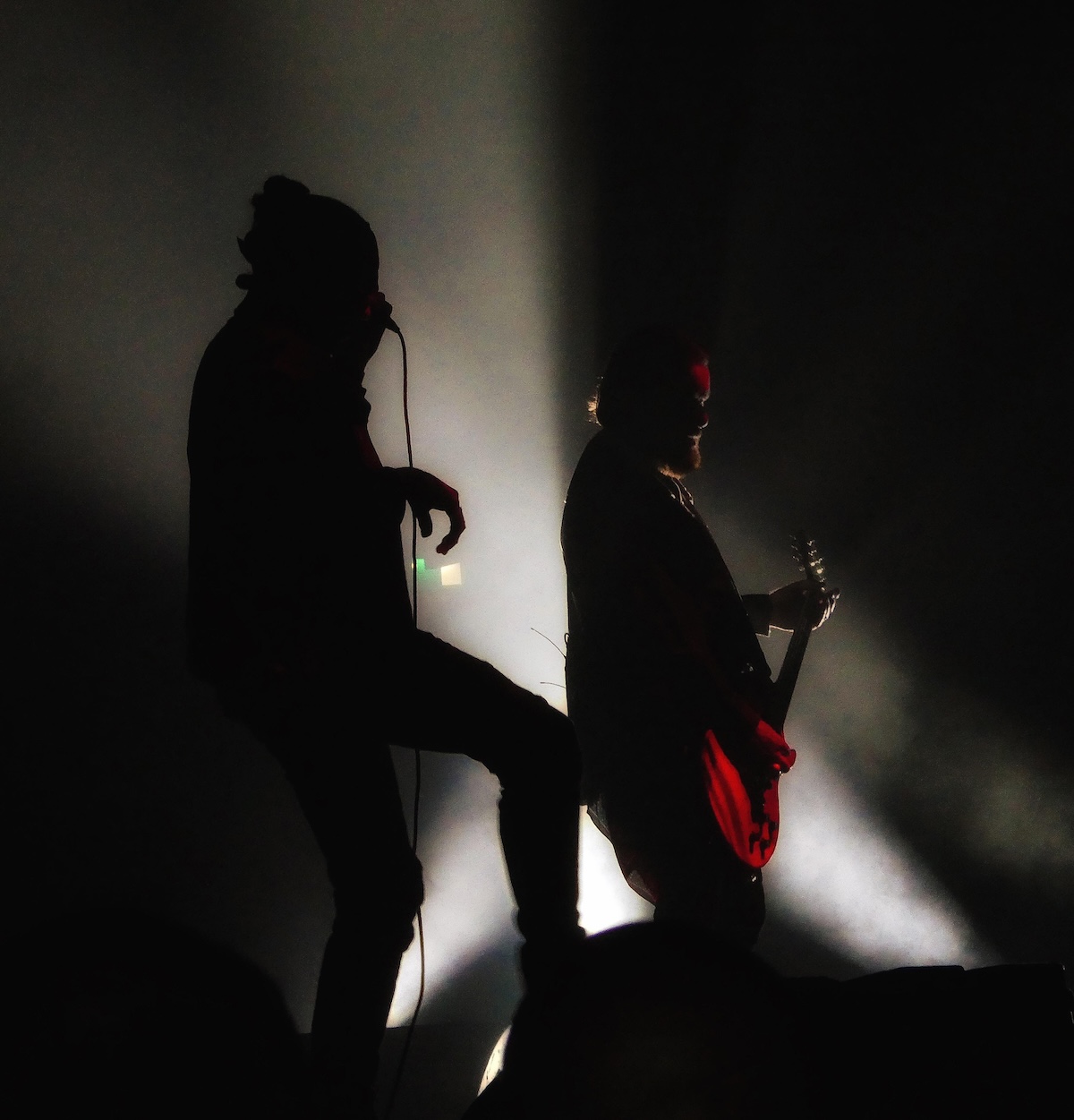
The shadowy “Moya” went even further back to Astbury’s time leading the earliest incarnation of the band, Southern Death Cult. Later, to close out the set, came “She Sells Sanctuary,” the signature hit song from the larger Cult songbook. Whether in Cult or Death Cult mode, there was an ease to their combined power onstage.
At the bistro, Astbury explains: “What compels me to do it? I’m a dog, there’s the meat. Let’s go.”
He estimates that he’s performed about 2,000 concerts in his life, mostly with the Cult, but also in his mid-’90s band Holy Barbarians, plus occasionally singing with James Lavelle’s Unkle, and his years stepping into the Jim Morrison position with Doors survivors Robby Krieger and Ray Manzarek.
“Add it all together, and that becomes natural instinct,” Astbury says. “That’s pretty much what I operate on. I’m not asking the algorithm for what to do next.”
Several days later, Duffy is back in L.A. from his home in the U.K., and checking in on a video call, bearded in a black T-shirt and shades, framed Cult posters on the wall behind him. He says his partnership with Astbury has survived through popular triumphs and occasional breakdowns in part from “the fundamental desire to do this for life.”
“We were born a year and a day apart,” he adds. “We’re very different and we’re very alike. And in some ways, that’s what’s given us the commonality to keep going with it.”
They split apart a couple of times over the years, including a low point in 2006 and 2007, when both Astbury and Duffy went off into other directions. They always found their way back together. “We do other things,” says Astbury. “We have other creative relationships, which is good. I think it’s really good for that core relationship to sleep around creatively, because you can bring it back.”
As a boy living near Liverpool, Astbury was awakened by his first hit of David Bowie through the 1971 song “Life on Mars,” a soaring, glimmering rock ballad, sung by a Technicolor rock ‘n roller from outer space. It was the first single young Ian ever purchased. “When I heard that, that was my frequency, that was the calling,” Astbury says. He grew up partly in Scotland and England, then emigrated to Canada, before returning to the U.K. as a young man in time to be part of a vibrant music scene erupting again.
As a fan in 1979, he and some friends were waiting outside a venue for a glimpse of the Clash as they walked out. Instead, manager Kosmo Vinyl invited them inside to meet the band. The experience left a mark.
“Sitting with those guys, they made it feel familiar,” recalls Astbury. “So certain artists were accessible—punk. And I just thought that’s the way it should be: No better than, no less than, we’re all at the same table.”
He was barely 20 when he met Duffy, bonding in part over the Sex Pistols. Duffy was a Manchester kid who had been in a band with Morrissey, and pals with future Smiths guitarist Johnny Marr. Duffy found a lasting partner in Astbury.
“We’ve got a lot of cultural similarity,” says Astbury. “There’s an unspoken contract, there’s an alchemy. It’s undeniable. We both sense that. We know that when we convene, something else comes in. The Holy Ghost appears.”
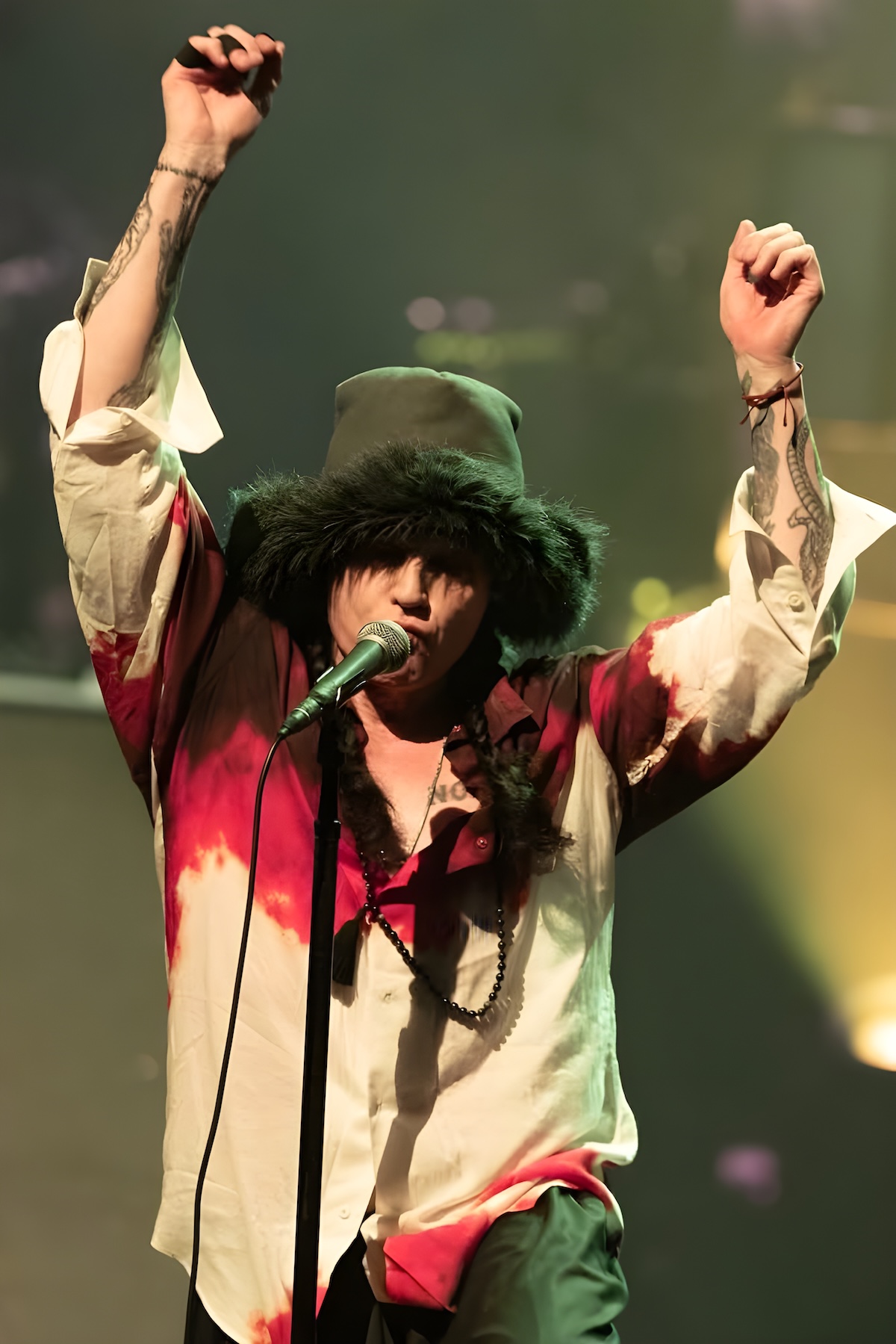
When they got together, it was a time of transition for Astbury, whose band Southern Death Cult was evolving (with the addition of Duffy on guitar) into Death Cult. That version of the band was barely in operation for seven months before things shifted again, this time toward the swelling rock riffs that showed itself on the Love album, beginning their time as a hitmaking operation with “She Sells Sanctuary.”
“The reason why we changed the name from Death Cult to the Cult after about six or seven months was that we thought we were getting pigeonholed as a goth band, and we didn’t feel like a goth band,” says Duffy. “We certainly didn’t want to sing songs about vampires and bats and graveyards and all that.”
Subsequent Cult hits like “Sweet Soul Sister,” “Love Removal Machine,” and “Fire Woman,” were muscular enough to fit easily in the era of Guns N’ Roses, making them a rare band (like Motorhead) that punks and metalheads could agree on. At the time, hair metal dominated MTV and the Sunset Strip. “We were like a little bit of a beacon of hope,” agrees Duffy, with a grin. “We were a spandex-free zone. There were a few bad hair experiments on my part, but all I can say is I was drinking heavily at the time, so I’m not responsible.”
The Cult were recruited to open dates on Bowie’s Glass Spider tour in 1987, facing stadium crowds impatient for the headliner every night. “I remember dropping my pants and Bowie was in stitches,” remembers Astbury, by then already comfortable with large crowds.
Moving around as a child helped create the social skills that would lead to him becoming a supremely confident frontman, delivering hard rock with bravado. “Being an immigrant kid, I had to adapt to environments really quickly,” he says. “So maybe that gave me an edge in terms of knowing how to be in a room, knowing how to be around people. I wouldn’t say it was bravado, it was more a sense of, I was a coyote. I could read a room.”
He could also be outspoken in interviews, or between songs onstage, if the mood struck. It was an impulse he now credits to his early years in Glasgow and Merseyside, England. “We call it being gobby,” he explains. “As a culture, we had to be very quick with wit, because if you weren’t quick witted, violence wasn’t far behind.”
At the beginning of the ’90s, Astbury was one of several rock singers approached for the Jim Morrison role in Oliver Stone’s movie The Doors. (Among the others considered were Michael Hutchence of INXS and the Beastie Boys’ Ad-Rock.) Astbury didn’t make the film, but began a relationship with the surviving Doors that led years later to an invitation to join guitarist Krieger and keyboardist Manzarek on the road as the Doors of the 21st Century.
“Oh, that was a whole lifetime, because I did about 150 shows with them,” Astbury says now of the experience. “It was family because it was very intimate. They were my mentors and my friends. I learned so much from them. I’m in debt.”
Astbury also went into a studio with Krieger and Manzarek to record three songs with producer Ken Scott (Bowie’s Hunky Dory and The Rise and Fall of Ziggy Stardust and the Spiders from Mars). The tracks were never finished. Astbury calls them “sketches,” and adds, “I have no idea where the tapes are. I didn’t get a cassette. I wasn’t allowed anything. I think it was an inner circle within the inner circle [thing], shall we say.”
Astbury and Duffy reunited in 2007, and the Cult has remained in action ever since.
At the Beacon in New York on October 14, the night began with an eight-song Death Cult set, from a twangy, spooky “Ghost Dance” to a thunderous “Spiritwalker.” The opening set isn’t limited to songs from the 1983 self-titled Death Cult EP, and includes others written during the same period but released later under the Cult name. After an intermission and a film, the band returns for a traditional Cult set of ferocious hits.
“We do give it our best, honestly,” says Duffy. “We don’t phone it in, and I know some do. It’s a real deal, warts and all. And like any real band, some nights are better than others. We’re an organic creature.”

The Cult’s last studio album in 2022 was Under the Midnight Sun, which was midway into production when the COVID pandemic landed, and shut everything down. It was a collection of songs built from the same epic rock elements the band is known for. Work on a follow-up is unlikely to begin until next year, Astbury says.
“I’m sure Billy’s got something somewhere. I’m always noodling. We’ve got a piano in the middle of our house,” Atsbury says regarding new material. “In the ether, there’s music, lyrics, ideas. If it happens, it’ll happen organically.”
While there is no formal plan yet to go into a studio, the idea of returning to the Death Cult way of doing things for the next recording is appealing to Astbury.
“For the first demo made for Death Cult, we had one hour—record it, mix it, and done in the hour,” Astbury remembers with a smile. “I’d like to do something like that, just walk in, maybe do something in a week. What could you do in a week? That’d be really interesting.”
To see our running list of the top 100 greatest rock stars of all time, click here.
Spotify’s AI is listening to your moods 22 Oct 3:30 AM (yesterday, 3:30 am)
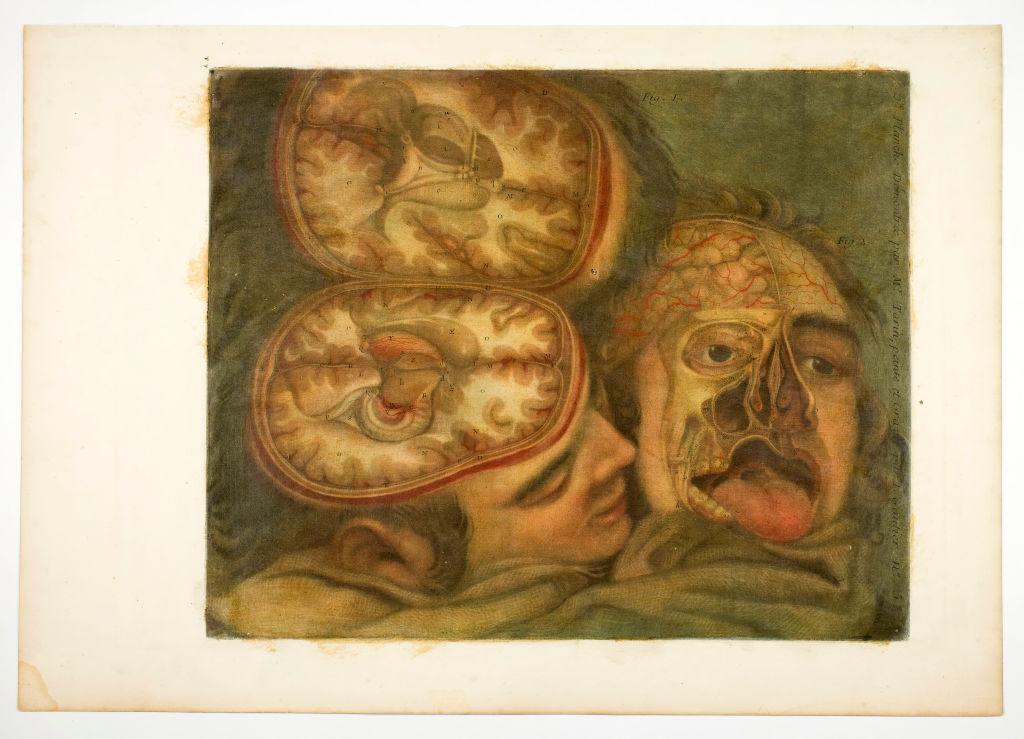
The Discover Weekly playlist that lands this Monday in my Spotify deck jolts me, packed as it is with jack-yo-body, hi-NRG-style club tomfoolery. Top of the 30 tunes that Spotify’s AI has selected for me is Marek Mela’s “Bring It” (“bring it bring it bring it bring it bring it”) followed by Christian Fletcher’s “Your Body” (“I don’t care about nobody I just want your hands on me”).
The selections throw me because my Spotify saves and faves are quite different — fragmented and downward-leaning storytelling-cum-moodbursts like “Farewell Transmission” done by Kevin Morby & Waxahatchee (“mama here comes midnight with the dead moon in its jaws”), and Massive Attack’s “Ritual Spirit” (“who’ll mend this broke beat star”).
More from Spin:
- John 5’s Cathartic Instrumentalism
- Bono, The Edge Revisit U2 Classics At Guthrie Prize Ceremony
- ‘Dream’ On: Miley Records New Song For Third ‘Avatar’ Film
A paranoid mystic of meth might suspect that the voracious machine-learning behind Spotify’s curatorial flagship — the streaming giant’s deus in machina — has reached singularity, deciding after scrutinizing my tastes to intervene and save me from my moroseness.
After all, the ever smarter-and-smarter machines of this now 19-year-old Swedish-founded company have ample stocks of human nature to scrutinize and learn from: around 675 million monthly users worldwide. Yet the playlist’s betwixt-song ads hint that Spotify is less Jesus than Janus, the two-faced god of antiquity. For, on the one hand, my personal Discover Weekly wants to boost me with sound, to see me getting nasty on the dance floor, but on the other hand it wants me to get equally busy with McDonalds and MiraLAX. “Follow your gut and your mood will follow,” says MiraLAX in the ad that plays after “Your Body”.
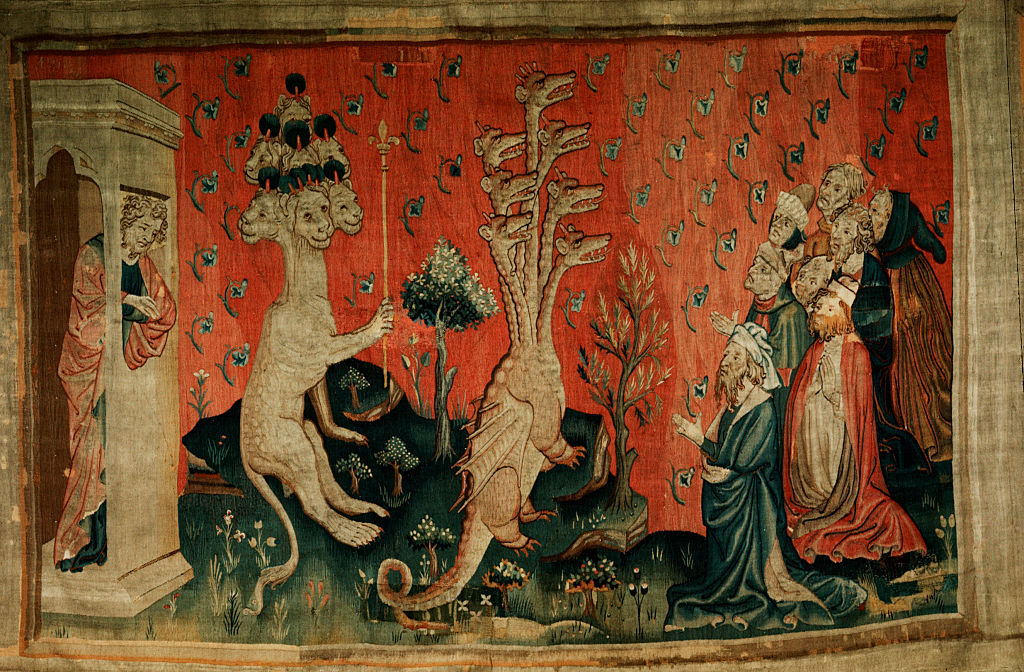
The stool-softener slogan makes a neat fit with Spotify’s AI-individuated playlists, however, which flow out each Monday to the more than 200 million subscribers of Discover Weekly. These hundreds of millions of people have spent billions of hours letting their moods follow the algorithm’s gut feelings about them. And in the infinite intestinal loop of it all, Spotify’s AI simultaneously studies the reception of those 200+ million playlists it generates and delivers. Because Spotify can listen to how people listen.
When Spotify bought London-based audio technologists Sonalytic in 2017, the streamer said the acquisition’s capabilities would be used to improve personalized playlists — like Discover Weekly. This tech-entity now within the world’s largest music streaming service goes way beyond noting when a user clicks ‘add to likes,’ or by tracking listening duration. Sonalytic touts its surveillance wares as “highly robust to changes in pitch and tempo, the addition of background noise, distortion, filtering, compression, looping, EQing and much more.”
This is all part of hoovering up sound anywhere and everywhere of use to it in order to, as it boasts, “delve deeply into the listening habits of the whole planet.” Creepy much? But wait — it gets worse, way worse, for this goes far beyond tracking people’s listening habits. In the supposed interests of developing better individualized playlists and suggestions, Spotify even listens to what people say and how they feel.
The year after buying Sonalytic, Spotify filed a patent application titled “Identification of Taste Attributes from an Audio Signal.” According to the 2018 application, Spotify’s invention leapfrogs the cumbersomeness of streaming services needing to query users about what they like in order to make good suggestions. Instead what the invention does, according to the patent details (patent # US 10,981,948 B2, successfully granted Jan 12, 2021), is use device microphones and speech recognition software to “retrieve speech content” and then analyze and identify it for attributes including: “emotional state of a speaker”; “age of a speaker”; “accent of a speaker”; “physical environment”; and “number of people in the environment.” Furthermore, “user’s friends” can be subject to analysis.
And so, by subjecting hundreds of millions of people — billions, potentially, given that this intimate, extreme, Ear of Sauron-style surveillance records and studies even bystanders in the vicinity of users — Skynet, sorry I mean Spotify, can more efficiently make a “determination of preferences for media content.”
Now I’m feeling really weird. But it’s listening, so I don’t want to talk about it. I don’t want it to know that I know. But maybe it knew I knew before I knew I knew. Maybe it tried to circumvent my full consciousness of this nightmare by serving up mindless dancefloor tracks. Exterminate rational thought. Get jiggy widdit.
OK, so what else’s in the playlist that Spotify AI chose for me? Here’s number 15, “Butts Bumpin’” by Paige Tomlinson: “Jumpin’ bumpin’ bass keeps pumpin’/Crowds are hyped and butts are bumpin’.”
To see our running list of the top 100 greatest rock stars of all time, click here.
Sick New World Fest Reborn In Vegas, Fort Worth 21 Oct 9:10 AM (yesterday, 9:10 am)
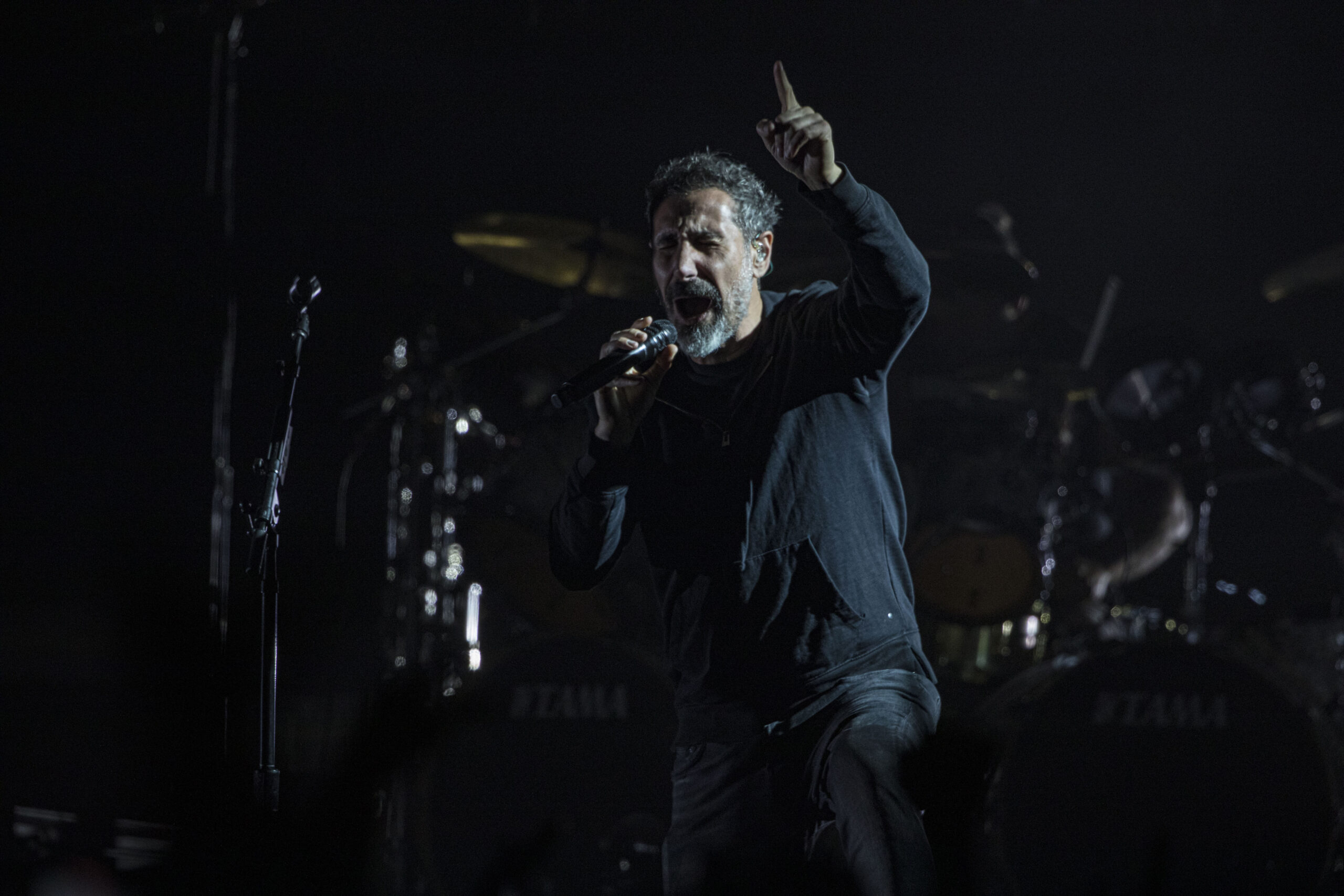
After taking 2025 off due to issues related to its lineup, the hard rock festival extravaganza Sick New World will be back with two editions next year. The first will be held at the event’s customary home of Las Vegas Festival Grounds on April 25, while an inaugural Texas version is set for Oct. 24 at the Texas Motor Speedway in Fort Worth.
System of a Down will top the bill in both cities. Other acts appearing at one or both stops are Deftones, Korn, Slayer (performing Reign in Blood), Bring Me the Horizon, Evanescence, the Prodigy, Knocked Loose, AFI, Mastodon, Ministry, Power Trip, Failure, Filter, Melvins, Acid Bath, Danny Elfman, KMFDM, Coal Chamber and Clutch.
More from Spin:
- John 5’s Cathartic Instrumentalism
- Bono, The Edge Revisit U2 Classics At Guthrie Prize Ceremony
- ‘Dream’ On: Miley Records New Song For Third ‘Avatar’ Film
Since launching in 2023, Sick New World has hosted some of the only System of a Down performances in the past five years and has elevated both new and cult classic acts in the hard rock genre. “I had more fun there than I had on many, many other tours, and that’s why we’re doing it again,” frontman Serj Tankian told SPIN after the inaugural edition. “It was a blast. We rehearsed just enough to know our chops and then the rest, who the fuck knows? Let’s see what happens on stage.”
Click here for full lineups and ticket on-sale details.
Sick New World was set to return to Las Vegas this April with Metallica and Linkin Park, but the event was scrapped in December 2024 due to “unforeseen circumstances” that promoter Live Nation was “unable to overcome.” According to HITS Daily Double, the event ran into trouble in part due to its former booker, Jeffrey Shuman, overpaying for talent, with the two headliners allegedly pocketing $5 million each.
To see our running list of the top 100 greatest rock stars of all time, click here.
Live’s Best Moments from the Summer Unity Tour 21 Oct 7:59 AM (yesterday, 7:59 am)
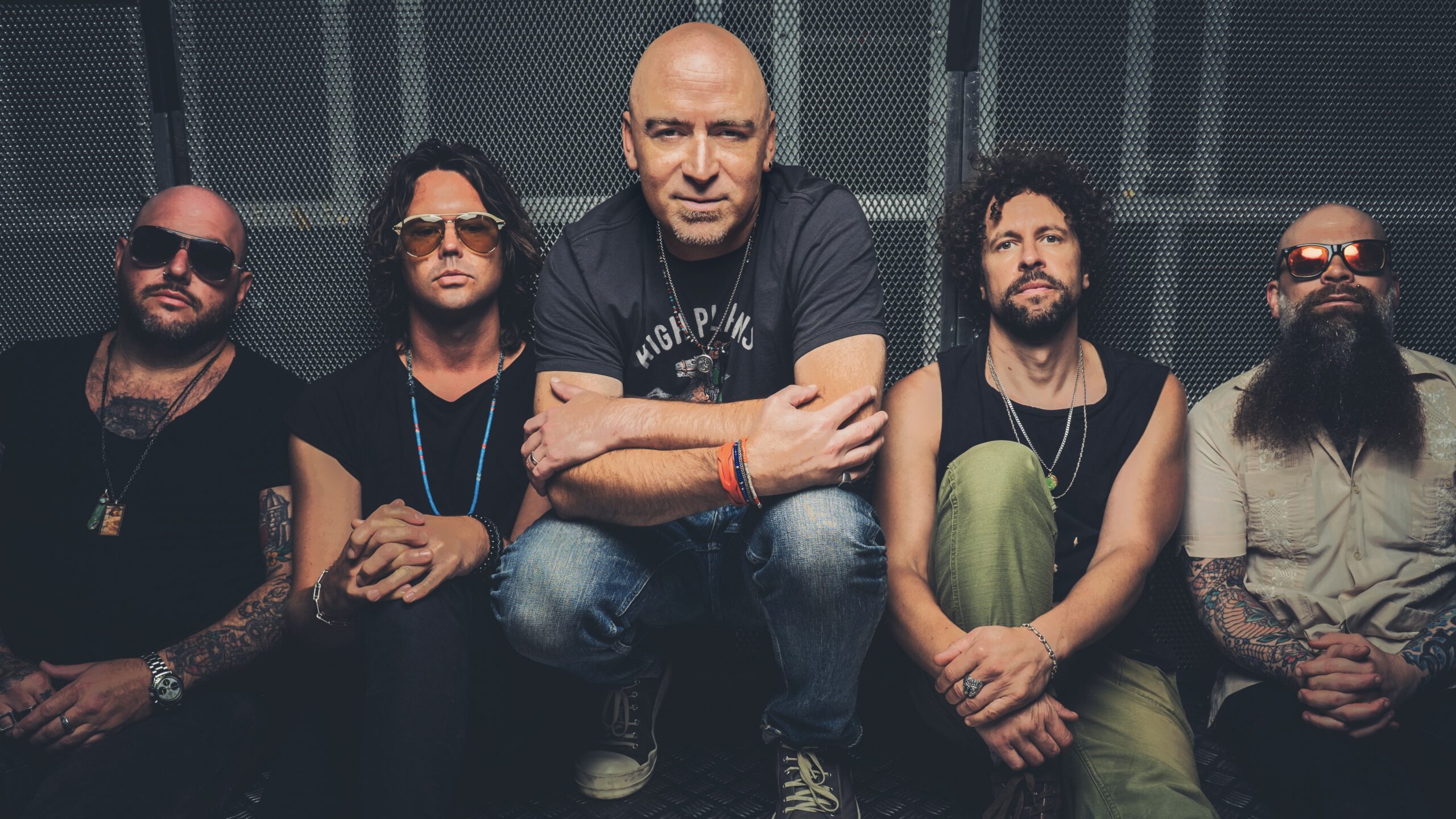
Live and Collective Soul both made massive hits in the 1990s, but it’s in the 21st century that the two veteran alternative bands have become a successful package deal on the road, first co-headlining a tour in 2008 and then reuniting this year for the Summer Unity Tour. The two bands played 30 dates from coast to coast throughout July and August, with openers Our Lady Peace and Greylin James Rue.
The tour wrapped up a few weeks ago with a date in Grantville, Pennsylvania, just an hour from York, where Ed Kowalczyk became Live’s lead singer over 40 years ago. Before Live heads back out to play shows in Michigan and Ohio this month, SPIN reached Kowalczyk via email to find out about some of his favorite memories from spending the summer of 2025 on the road. “There were so many highlights and nights to remember on our tour with Collective Soul,” Kowalczyk says. “I felt so energized and inspired the whole time; morning, noon and night for eight weeks straight. The rapport and the vibes backstage were so chill between the crew and bands.”
More from Spin:
- John 5’s Cathartic Instrumentalism
- Bono, The Edge Revisit U2 Classics At Guthrie Prize Ceremony
- ‘Dream’ On: Miley Records New Song For Third ‘Avatar’ Film
1. Biking and flying a drone in Nashville
Kowalczyk was impressed by the site of Live and Collective Soul’s Nashville show on August 10th, the FirstBank Amphitheater, which reminded him of Colorado’s most famous music venue. “The venue in Tennessee was dug out of a quarry; it has a super surreal Red Rocks vibe at night,” he says. “I flew my drone around there and got some incredible footage. It was a great summer and we got very lucky with the weather which meant we could all be outside at the venues riding electric bikes and taking it all in.”
2. The fans who brought the whole family
“I have to say, the best part of the whole experience for me was seeing the new generation of young fans every night,” says Kowalczyk, who left Live in 2009 and rejoined the band in 2014, finding that many of the band’s original fans now have kids that they bring to the shows. “I met so many people who introduced me to their kids and said, ‘This is so-and-so’s first concert, and it had to be Live.’ It was such an emotional jubilee every night, its hard to put into words.”
3. The grub in Missouri
One of the things about touring life that many musicians relish is the chance to sample cuisine around the country, and Kowalczyk fondly remembers the food and the wine in St. Louis the week that the band played the Thunder Ridge Nature Arena in nearby Ridgedale, Missouri. “My favorite dining experience was at the Capital Grille in St. Louis on a day off. It was directly across the street from the hotel, so I popped over by myself and settled in,” he says. “My first course was a huge plate of Utz style potato chips with a bowl of gourmet chip dip and a blob of caviar on top; I inhaled it and washed it, and 3 dozen oysters, down with an entire bottle of Whispering Angel Rose…I walked out at 4pm. Best meal and most rock-starrish day drinking day I had on the tour; unforgettable.”
4. Embracing the Texas roots of Live’s current lineup
Kowalczyk is the only remaining member of Live’s original Pennsylvania-based lineup, and all of his bandmates are now Texans: keyboardist Nick Jay, guitarist Zak Loy, bassist Chris Heerlein, and drummer Johnny Radelat. That made the tour’s string of August dates in Irving, Houston, and Austin into a special occasion for Live. “All of the Texas shows were bananas and it felt like the band really reconnected deeply there,” Kowalczyk says.
Live will continue performing across North America well into 2026, including a tour of Canada with Big Wreck that begins in February. Links to tickets for all shows can be found at https://livetheband.com
JAN 16 – LAS VEGAS, NV – THE VENETIAN
JAN 17 – LAS VEGAS, NV – THE VENETIAN
FEB 23 – ABBOTSFORD – ABBOTSFORD CENTRE
FEB 24 – KELOWNA – PROSPERA PLACE
FEB 26 – CALGARY – GREY EAGLE
FEB 27 – EDMONTON – ROGERS PLACE
MAR 1 – SASKATOON – SASKTEL CENTRE
MAR 2 – WINNIPEG – CANADA LIFE CENTRE
MAR 5 – HAMILTON – TD COLISEUM
MAR 6 – OTTAWA – CANADIAN TIRE CENTRE
MAR 7 – LONDON – CANADA LIFE PLACE
MAR 9 – OSHAWA – TRIBUTE COMMUNITIES CENTRE
MAR 10 – LAVAL – PLACE BELL
MAR 11 – QUEBEC CITY – VIDEOTRON CENTRE
MAR 13 – MONCTON – AVENIR CENTRE
MAR 14 – HALIFAX – SCOTIABANK CENTRE
To see our running list of the top 100 greatest rock stars of all time, click here.